#i understand the source material is ALSO predominantly men
Explore tagged Tumblr posts
Note
So...Thoughts on the whole people thinking Sylvie is Aro-Ace? I can kinda see her being Aromantic, but with her mentioning she's more "hedonistic" than Loki and silently hinting that she's Bi too, can't really see her as Asexual. But what do you think?
LET'S TALK ABOUT SYLVIE'S SEXUALITY, HER RELATIONSHIPS WITH LOKI AND MOBIUS, & HER CONTRIBUTIONS TO THE SERIES NARRATIVE
Before I answer this, I think it's important to acknowledge that fictional characters exist for people's comfort and pleasure. I write original fiction, and I would hope that most artists believe in the right of the audience to interpret character to meet their personal needs. To me, canon is a sandbox. Everyone should play with it as they please and not hate on each other. There are more important things in life to worry about. Therefore, if Sylvie reads as Aro-Ace to you and that reading brings you joy, then she is.
This question inherently requires the need to talk about Sylki in this post. I predominantly analyze Lokius, so please, no hate! My number one rule is never yucking someone's yum. Furthermore, Sylvie plays a critical role in Loki's development and the philosophical thrust of the series, of which Mobius also contributes to as the other half of Loki's character arc equation (selflessness and sparing life [Mobius] + free will and revolution [Sylvie]). It would be biased and disingenuous to not acknowledge her contributions to the overarching narrative.
ARO-ACE INTERPRETATION
All right, your question! I can definitely can see Sylvie as being aro-ace. That's a legitimate interpretation based on how she responds to Loki's flirtation and romantic advances. It is also possible that she's an aromantic bisexual. This second possibility is more likely based on the text the audience is given.
THE CANON TEXT
Having said that, I think you're curious about what the source material is trying to say about Sylvie's character and how that influences her sexuality. I believe it's important to remember that external behavior doesn't dictate how someone defines themselves. Closeting and disengagement from intimacy because of trauma are prime examples of this.
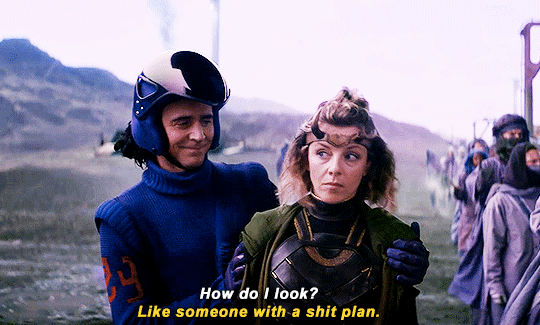
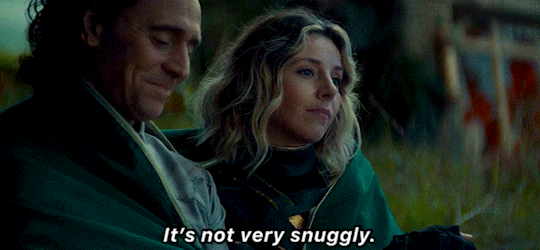
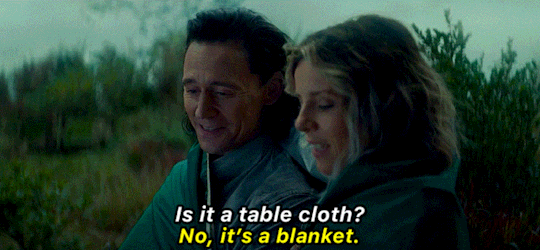
The train scene in S1E4 reads as earnest. Loki and Sylvie are both very lonely characters. In this moment, both are trying to connect with someone who finally understands them because they are the same. It's actually a lovely nod to the queer experience.

The dialogue, lighting, and costuming (blue, purple, pink) in this scene communicates they are both queer, specifically bisexual. The lighting and costuming combining to represent the bisexual pride flag is an example of queer subtext in film. The dialogue, while direct, is also written in such a way that it avoids explicitly stating "men and women." Sylvie later comments that the brief flings she indulges in during apocalypses helped her "keep going". She even specifies that apocalypses make people desperate. This suggests that Sylvie likely didn't need to do much wooing or charming like Loki would to obtain a sexual partner. Finally, the way Tom and Sophie play this scene is vulnerable. I therefore believe we can take this on-screen admission at face value.
So the question becomes, why does Sylvie respond to Loki's flirtations the way she does?
SYLVIE'S BACKGROUND
Sylvie was orphaned and forced to run all her life from a very young age. Her backstory is deeply tragic. To live in such a way means that she never had the opportunity to experience adolescence.
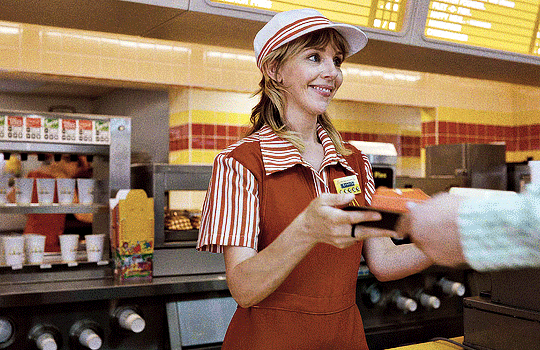
NOTE: This is honestly my favorite gif of Sylvie. She's so sweet and cute when she's happy. I can't get over the 5 stars on her employee badge. "Sylvie, can you refill the straws?" "Already did it!" The sweetheart.
Sylvie working at McDonald's accomplishes two things: it allows Disney to fulfill their advertising sponsorship agreement for the fast-food franchise, and it subtly alludes to Sylvie's need to live the adolescence she didn't get to. The TVA forced her into arrested development. She never had the chance to make friends and safely socialize on her own terms. The centuries of trauma have made trust, let alone romance, completely foreign to her.
Which is why, when Loki and Sylvie have romantic scenes, she is often awkward or, if not unreceptive, wary. Her previous flings, as she agrees with Loki, were "never real". Physical intimacy without emotional intimacy is a familiar dynamic for both characters. Their relationship with one another is their first experience of emotional intimacy (or at least attempt at it) outside of their families. The pursuit of this emotional intimacy feels safe to them because they are the same entity and thus they know each other's base nature (versus nurture!) to some degree.
The difference between them is that Sylvie has not experienced social rejection in the way Loki has (nurture!). She recognizes the wrongness with which the TVA has treated her. She knows the absolute atrocities the TVA has committed. She is determined to destroy them to free herself and all timelines. Sylvie is consequently more self-assured, more confident in what she wants and believes in, than Loki. In S2, Sylvie's clarity on desire is what allows her to help Loki articulate what he wants: his friends back, most especially Mobius.
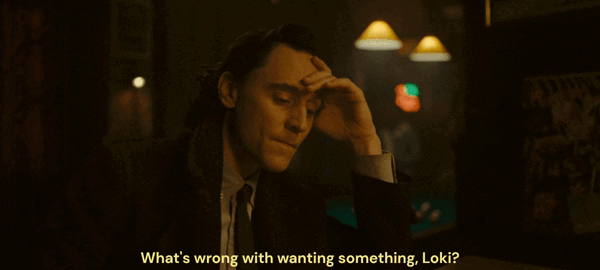
In S1E1, Loki, still posturing before Mobius, describes himself as a "liberator". At this point in the story, we know that isn't true, but it will become true by the finale. This line of dialogue foreshadows Loki's trajectory as well as Sylvie's revealed motivation in S1E4: to liberate.
THE NEXUS EVENT
There are a variety of ways for viewers to interpret what exactly the Nexus Event was. The canon, within the text of Mobius's dialogue and verbal confirmation from the creators, is that Loki and Sylvie fell in love. Now, I'm not going to spend time arguing over other interpretations here, but I will say that regardless of whatever pairing or OT3 a viewer ships, the Nexus Event was ALSO definitively this: two Lokis in the same place, at the same time, not feeling lonely together.
And Sylvie, who had confessed to Loki she has no friends and has never really experienced joy, answers Renslayer with the number of positive memories she has:
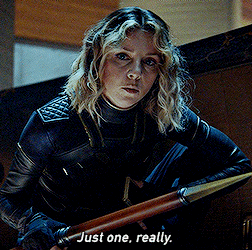
Sylvie doesn't state it outright, but the subtext is clear that her one positive memory was her time with Loki on Lamentis. Indeed, moments later, Sylvie prunes herself in an effort to find and rescue him.
SYLVIE & MOBIUS
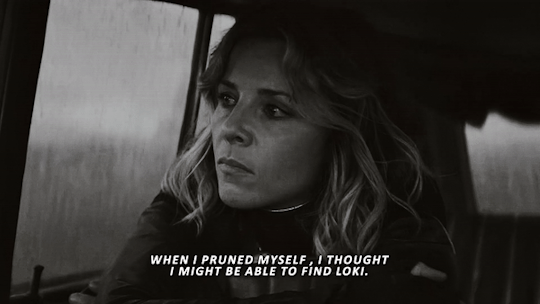
But being the harshly pragmatic individual she is, upon arrival and encountering Alioth, Sylvie assumes Loki didn't make it. I don't think Sylvie means what she says in a cruel way. I think she believes this because she is accustomed to disappointment and accordingly guards herself with cynicism. Sylvie's traumas, her difficulty with trust, her inexperience with intimate relationships, and her cynicism all combine to create an individual who may appear aro-ace when that may not necessarily be the case. Please note, however, that Sylvie being aro-ace or aro-bisexual may still be a possibility. My analysis here is based on what the text and subtext seem to be telling us about her character.
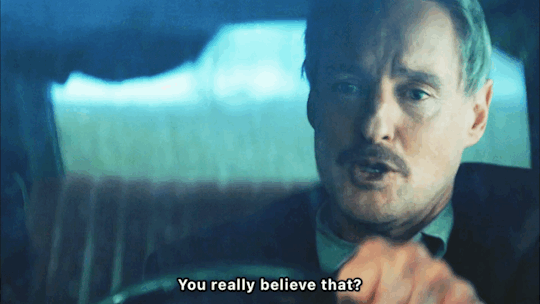
Notably, it is Mobius who is more optimistic about Loki's survival, wondering if Sylvie truly believes that Loki is dead.
This moment is brief, but it is significant because Mobius's optimism implies that not only does he believe in Loki, he also wants Loki to be alive. Sylvie is intelligent. She can read between the lines. We can also assume an off-screen conversation took place between them that confirmed for Sylvie Mobius's genuine care for Loki. When Sylvie informs Loki of this fact, I believe we get this:
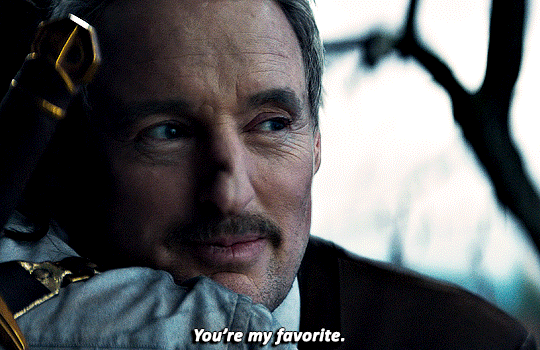
Mobius was conservative in how Loki might interpret their relationship, extending a handshake before their goodbyes. Loki, on the heels of his conversation with Sylvie, chooses to hug him instead. The result: Mobius is delighted!
I've long pondered on why Mobius would say, "You're my favorite" to Sylvie. I believe this is why: she helped along their friendship and opened the gates for physical affection between them. This demonstrates that Sylvie cares enough for Loki to ensure he is secure in his bond with Mobius. It likely helped that Mobius did not deny the TVA's evil when she pointed it out to him, and that he did not hesitate to apologize to her for it.
Ironically, it is Mobius's optimism, especially in the potential of broken things to become something better (whether it is Loki himself or the TVA), that creates the fraught philosophical divide between Sylvie and Mobius (and Loki) with regards to the TVA in S2.

THE S1 FINALE
The S2 finale is where the narrative between Loki and Sylvie turns, and the plot pivots to the deepening relationship between Loki and Mobius. Triggering this event is Loki's desire to slow down and think about the consequences of killing HWR in the Citadel at The End of Time.
This may seem out-of-character at first glance. S1E1-E4 have demonstrated that Loki's decision making is sometimes chaotic by virtue of impulse. What was the last impulsive decision he made with heavy consequences?
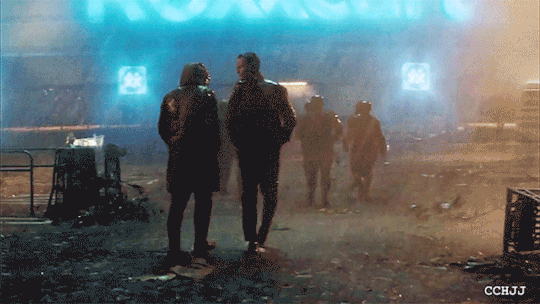

He ran off after Sylvie. A good decision ultimately, as Loki learns the truth about the TVA through Sylvie, but only by luck. This decision very nearly cost Loki a friendship, one he didn't even realize he had until Mobius called him a "bad friend."
Despite the fallout, Mobius recovers relatively quickly once he confirms Loki's claims and views Ravonna's recording of C-20. He reestablishes trust with Loki as soon as possible to help Loki be with the one he loves. Why? Because Mobius is ultimately selfless and wants Loki's happiness regardless of his own feelings of jealousy.
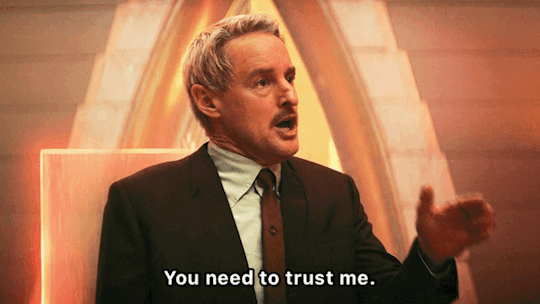
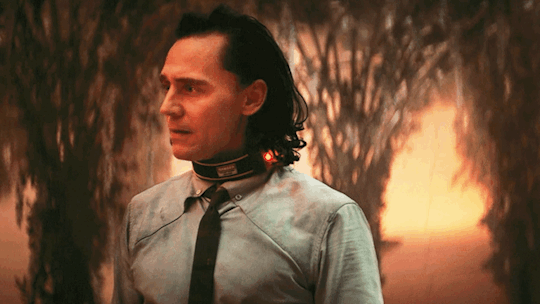
Which circles us back to the theme of trust and Sylvie's challenges with it.
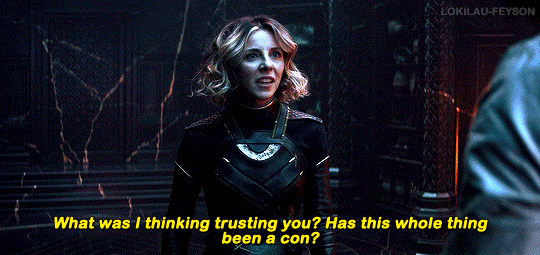
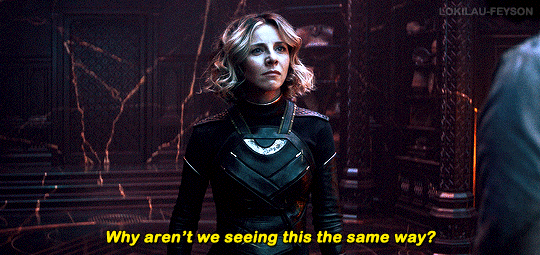
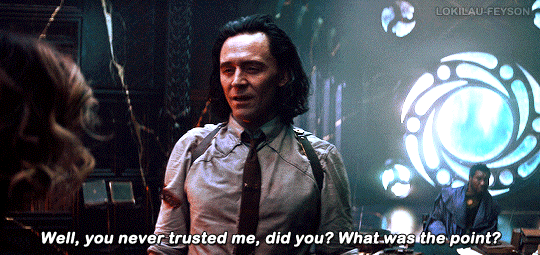
Loki and Sylvie's relationship falls apart not because of lack of mutual interest, but because Sylvie loses trust in Loki and with good reason: HWR (and thus the TVA) is the cause of all her suffering.
It is not Sylvie's fault she is this way. She hasn't had enough time to develop meaningful relationships, and the one relationship that was meaningful to her (Loki's) became, in her eyes, a profound betrayal. This experience only adds to the other traumas Sylvie carries with her, making encounters with Loki in S2 emotionally difficult if not triggering.
The relationships of Loki & Sylvie and Loki & Mobius are intentionally set side-by-side for 3 critical reasons:
1.) To demonstrate Loki's growth by developing trust and thus emotional intimacy with others.
2.) To create the Plot B emotional source of conflict in S2.
3.) To set-up Mobius and Sylvie's individual beliefs and values (selflessness and sparing life [Mobius] + free will and revolution [Sylvie]), which Loki combines into his own system of beliefs and values. This combination gives Loki the strength and wisdom to ascend the throne and become the God of Stories (and Time).
THE S2 FINALE
Loki comes to his final decision after speaking with the two halves of his character arc equation. Loki first seeks out Mobius, who shares with him the distinction between himself and Ravonna. Now, this is brainwashed Mobius. Brainwashed Mobius believed Ravonna could do the impossible while he couldn't. But Loki knows Ravonna's corruption.
Beneath Mobius's wisdom that "most purpose is more burden than glory" is also Mobius's heart: he could not prune children and that instinct was the right decision. His "failure" was not a failure of duty but rather his humanity succeeding despite the brainwashing. It's this same intrinsic compassion that drove Mobius to convince Ravonna to spare Loki. Loki articulates this to Don as such. He therefore takes the message of selflessness and sparing life from Mobius to Sylvie.
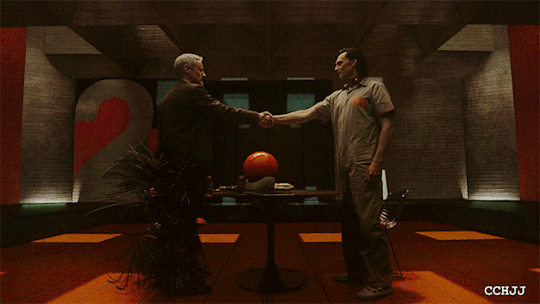
Sylvie, in turn, challenges Loki, stating they should have the freedom and right to fight whatever comes on their own terms.
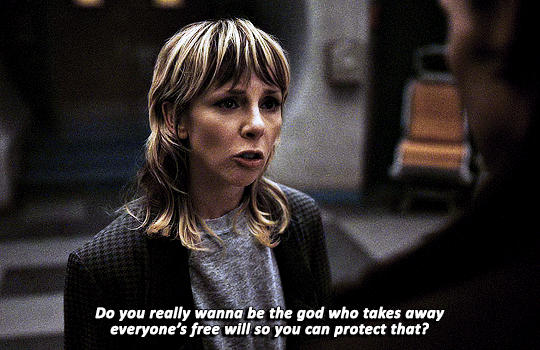
She also stresses that it is all right to destroy things. Upon hearing this, Loki comes to the conclusion that what is destroyed must be replaced with something better. What needs to be destroyed? Not the TVA and the people in it (not Mobius, Verity, OB, and Casey), but the Loom.

Loki sacrificed himself (selflessness + sparing life [Mobius]) in order to save all timelines (free will + revolution [Sylvie]). Loki sparing Sylvie's life is a direct consequence of Mobius having fought to spare his.
Through this sacrifice, Loki gifts Sylvie the chance to get the type of positive experiences she wants and needs, which includes future romance, if she so chooses. That is canon and is a genuinely romantic gesture regardless of anyone's interpretation of mutual reciprocation or lack thereof.
It is also canon that Loki loves Mobius and Mobius loves Loki. Their actions for one another across both seasons demonstrate this to be true. Is it also romantic? Absolutely. Is it sexual? On screen, no, and it doesn't have to be. Romance does not require sex, let alone physical contact, to exist.
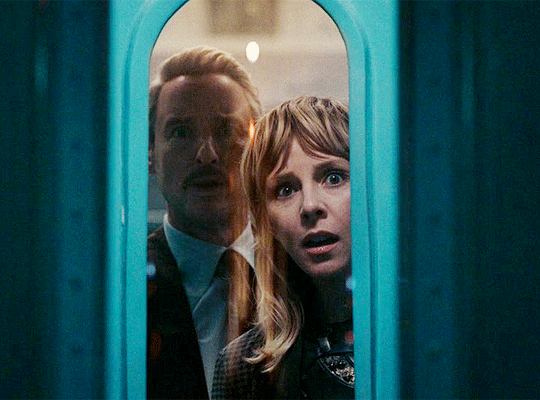
Loki loves them both.
96 notes
·
View notes
Text
WOMEN IN THE COMMUNIST PARTY OF MALAYA
The history of the Communist Party of Malaya (CPM), also known as the Malayan communist Party (MCP), a predominantly Chinese revolutionary political party formed in 1930 that provided the backbone of the anti-colonial (both anti-Japanese and British) as well as the anti-capitalist movement in Malaya, has been systematically obscured and silenced due to the anti-communist campaigns of the Malaysian and Singaporean governments. In the exclusion of CPM, we see how history is indeed written by the victors. While some prominent male members of the CPM such as its long-time leader, Chin Peng, have written memoirs to tell their side of the story, the history of women’s involvement in the CPM has especially been forgotten and ignored despite their contributions to the party’s strength. This is because many of the women, due to circumstances of their time, were not very well educated and cannot read or write, much less write their own histories (Khoo, 2004). Women members of the CPM had remarkably similar motivations as those of recruits who joined the all-female Rani of Jhansi Regiment during WW2. Many of these women in the CPM saw the movement as a form of rebellion against the feudal and oppressive patriarchal structure that they experienced in their own lives. Born into periods of socio-economic transition and political turmoil, they witnessed injustices and the exploitation of their communities by the British and Japanese colonial governments. This compelled them to join the CPM, the only force fighting against colonialism at the time. The Maoist ideology promulgated by the CPM also appealed to its majority ethnic Chinese members (although there were also Malay, Chinese and Thai members) that felt a sense of patriotism towards communist China. To shed light on the social memory of women in the CPM, Agnes Khoo has written a ground-breaking book consisting of a set of oral history interviews with sixteen women from Singapore, Thailand and Malaysia who were involved in the Malayan anti-colonial struggle and led extraordinary lives. Many of them now live in political exile, in villages close to the Malaysian border in Southern Thailand, where many of the CPM guerrillas remain stateless to this day. Their interviews highlight women’s participation not just in the CPM, but in the wider social and political landscape of Singapore and Malaya. This blog entry will highlight one voice- Guo Ren Luan who was born in 1937 in Singapore. Her full interview can be found in Khoo’s book.
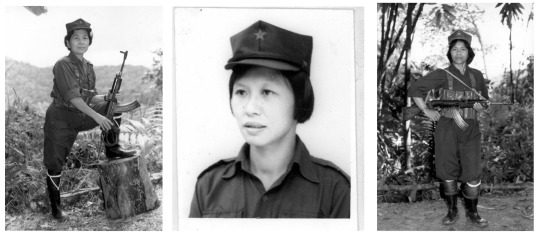
Women members of the CPM. From right to left: Chen Xiu Zhu (Born 1937, Bukit Gurun, Kedah), Cui Hong (Born 1949, Thailand), Suria (alias Atom. Born 1951, Thailand). Source: Agnes Khoo.
Guo was influenced by one of her classmates at the Nan Chiao Girls' High School, but she joined the CPM on her own accord after the 1953 rape and murder of a girl by a man who was heavily influenced by pornography. This incident sparked the beginning of the 'anti-yellow culture' campaign in Chinese middle schools in which Guo actively participated. Guo says that “I joined out of my own sense of justice and initiative. As women, we felt more for the issue because we realized this could happen to us anytime. So it was natural that we did not agree with what was going on” (p. 5170-5171). The anti-yellow campaign is believed to have been originally organized by the leftist in Chinese schools to urge students to read and take interest in pro-communist materials as against non-communist content or matters which were branded as Yellow, such as aspects of Western popular culture like pornography. Guo also became very active during the anti-military service movement, which was a movement opposed to the implementation of the National Service Ordinance by the British government, a policy for the mandatory registration for military service for boys at the age of 18. According to Guo, her fellow students and her “saw it as a British plot to attack the CPM. We knew the CPM was good for the people, so we disagreed with the [British] government for using the army to repress the CPM…We did not understand the issues [of communism/the CPM] very deeply ourselves. We were against colonial oppression; that was it” (p. 5198-5199). The anti-military service movement culminated in the National Service riots of 1954, May 13th- “We were angry that such a peaceful and legitimate action of the students was brutally suppressed by the government, so we felt that we had to support them. As soon as I got there, I was shocked - the riot police with batons and anti-riot buses were everywhere. Sirens were sounding and the police were about to hit…That was the first time the anti-riot squad was used against the students. I saw it with my own eyes. It was easy to frighten the female students. As soon as the batons hit them, they all started crying and running away. I was not hit though. I just ran all the way home…The police reaction towards the students made me finally realise that actually they are not meant to protect the people” (p. 5218-5219). As a student, Guo continued to participate in various movements and rallies as part of the Federation of (Chinese) High School Student Unions, including at workers strikes like the Hock Lee Bus Strike- she sang and danced at the workers’ rallies and partook in fundraising for them. Guo says that “as my family was poor, my heart has always been with the workers and peasants, who shared my conditions” (p. 5255).
Eventually, Guo was targeted for her political activities as part of the CPM and the Students Federation which was banned by the British government. She fled in 1957 but remained underground in Singapore. After she went underground, she lived in a farmer’s house in the rural countryside area of Singapore. “We would consciously teach the housewives. Through these literacy classes, we spread our ideas and visions to them. They were basically sympathetic to us since we were seen as students oppressed by the government and hiding in their homes…We also wanted to train ourselves in hard labour so we removed our shoes and slippers and joined them in farming…In other words, we tried to integrate with them. We did whatever they were doing. Women’s work was both in and outside the house. In the morning, the women had to wash clothes; fold them up when these were dry, prepare meals, take care of the children and so on, whilst the men could relax after work, have nice chats and drink tea. The men hardly did housework. Literacy was our focus during lessons with the women in the village. It was not so much politics or gender consciousness. Nevertheless, we tried to share our opinions about gender equality informally when we were doing farm work or housework together with them” (p. 5348-5360). While she was underground, she also met her husband but soon after her wedding, the mass arrests of February 2, 1963, also known as Operation Coldstore, happened and her husband was later arrested. “I left Singapore only after Lee Kuan Yew had taken over the government and the February 2nd incident took place in 1963. Thinking back, we had mobilised the masses to vote for the People’s Action Party during the General Election. We were supportive of Lee Kuan Yew then. Lee Kuan Yew came into power and he began to change. He started to arrest our people. By that time, we felt the winds of change already and were somehow prepared.” Since then, Guo has remained in exile from Singapore. With other CPM members, she lived like a nomad in Indonesia for 15 years, having to take care of her daughter alone- “In such harsh circumstances, it was very difficult, especially for female comrades to endure and persevere. As women, we not only had to protect ourselves, so that the enemy would not capture us, we were equally responsible for the safety of the group, as our male comrades” (p. 5580). It was only until the 1989 Peace Agreement which marked the end of the communist insurgency of Malaysia that she relocated to Yala village in Southern Thailand, calling it her home.
“Some people told me that I had wasted my youth and precious time in the movement. I do not put myself on the high pedestal but I really do not find my decision a pity. I have had some very rich and extraordinary experiences. I have no regrets. My life has been enriched. I never thought that I could live until today. I had narrowly escaped so many arrests back in Singapore. But I had a concrete goal in life and I was living together with my comrades, it was a full and rich life. This was meaningful work even though it might not be seen by the public as such.” (p. 5714) Like other women interviewed by Khoo, Guo upholds her decision to join the CPM, and believes that the CPM’s anti-colonial fight should be acknowledged in playing a role in the independence of Singapore and Malaysia.

Guo Ren Luan (Born 1937, Singapore). Source: Agnes Khoo.
References
Khoo, A. (2004). Life as the river flows: Women in the Malayan anti-colonial struggle. SIRD.
7 notes
·
View notes
Text
All-Star Superman Annotations: Smash Mouth
In the late 1990s, Grant Morrison legendarily met ‘Superman’ in a self-described shamanic encounter outside the San Diego convention center at 2 in the morning and questioned him. His answers and general demeanor inspired his take on the character in his 1998 Superman 2000/Superman NOW pitch alongside Mark Waid, Mark Millar, and Tom Peyer, and later his seminal All-Star Superman alongside Frank Quitely, Jamie Grant, Phil Balsman, and Travis Lanham.
The year after that initial pitch - whether out of the transcendent synchronicities Morrison has written on underlying the seeming arbitrary mundanity of day-to-day life, or significant behind-closed-doors dealings - Smash Mouth released its equally seminal All-Star.
youtube
The superheroic associations are immediately evident. But Mystery Men (very fun movie) and Steve Harwell lifting a bus are but the tip of the iceberg. Or perhaps more appropriately the edge of a cliff, for when you peer within, the connections here go deep.
Somebody once told me the world is gonna roll me I ain't the sharpest tool in the shed She was looking kind of dumb with her finger and her thumb In the shape of an "L" on her forehead
The opening of the song is obviously an evocation of the underlying rivalry between longtime nemeses’ Superman and Lex Luthor, with the latter mocking his erstwhile opponent on his idealistic shortsightedness in Lex’s mind, as well as that by poisoning him via solar radiation overdose he has at last triumphed. Of course, as the narrative remains on Superman’s side, Luthor’s worldview is exposed as self-aggrandizing solipsism, rendering him looking kind of dumb. That the figure of the song is referred to as ‘she’ is curious; perhaps this is in fact Nasthalsia ‘Nasty’ Luthor. Or it may refer to a sort of conceptual malleability of identity referring to Luthor’s eventual transformation via rehabilitation and time-travel into Leo Quintum, a decidedly more flamboyant and effeminate figure than the decidedly machismo-poisoned Luthor.
Well the years start coming and they don't stop coming Fed to the rules and I hit the ground running Didn't make sense not to live for fun Your brain gets smart but your head gets dumb So much to do, so much to see So what's wrong with taking the back streets? You'll never know if you don't go You'll never shine if you don't glow
‘Hit the ground running’ is an apt choice of words when the title of the first chapter is Faster...; the progression of time and defiance of rules, going down the backstreets, can be read as his reaching beyond the typical rules and structures that have fenced him in over decades of continuity and tradition in the face of his pending mortality, such as revealing his identity to Lois (his realization of his mistreatment of her and their relationship as his intellect increases corresponds neatly to his brain getting smart but his head getting dumb), freeing Kandor, and entrusting humanity and Quintum/Luthor specifically with his genetic legacy.
Hey now, you're an all-star, get your game on, go play Hey now, you're a rock star, get the show on, get paid And all that glitters is gold Only shooting stars break the mold
Morrison referenced in his All-Star Superman exit interview with Newsarama his initial frustration with the All-Star brand going on his definitive Superman text, seeing it as an intrusive corporate logo (not knowing that it would ultimately come to be associated predominantly with that one story) when he wanted his story to be seen simply as ‘Superman’. Choosing to work with what he had, his story finds Superman becoming a literal golden glittering all-star shooting across the sky, pure information, an untouchable incorporeal living myth sprung from a man as akin to the ‘rock star’ image formed around ordinary people (such as Morrison himself in his younger days with his band The Mixers). The subject of payment will be returned to at the conclusion.
It's a cool place and they say it gets colder You're bundled up now, wait till you get older But the meteor men beg to differ Judging by the hole in the satellite picture The ice we skate is getting pretty thin The water's getting warm so you might as well swim My world's on fire, how about yours? That's the way I like it and I never get bored
This verse at first appears to be in reference to the coming of the freezing All-Night of the Bizarro Underverse, and Superman’s return as a ‘meteor man’ crashing into a travelling circus. However, while this is a neat narrative transition it is in fact in reference to metaphorical coldness and figurative meteor men, in the form of Bar-El and Lilo, and Superman’s reckoning with his Kryptonian heritage (though the opening lines also evoke the emotional coldness and grappling with mortality that define #5-6: it is this central 6-issue chunk that make up the night side of the archetypal journey into the underworld and rebirth that Morrison has commented formed the mythical structure of the series). The ‘hole in the satellite picture’ is interesting; it could be seen as a roundabout reference to the Kryptonian couple’s conquest of human culture as seen in Metropolis both architecturally and in Jimmy’s adoption of Kryptonian overpants and belt, culminating in the literal hole in the moon (symbolic of dreams, as all culture is the product of) patched up with human cultural artifacts such as the Golden Gate Bridge. More pertinently however, it evokes General Zod’s command of the airwaves in 2013′s Man of Steel, where he not only inhabits a colonialist view of planet Earth evocative of Bar-El and Lilo, but mentions that Superman “could have built a New Krypton in this squalor”, a direct line lift from the issue. Either the time-bending syncronicities go further than initially realized, Morrison played an extremely long game while consulting on the film, or Zack Snyder is not only in fact in possession of the deep understanding of Superman and his source material that his apologists claim, but himself figured this all out a very long time ago and adjusted his work accordingly. In any case, the Kryptonian astronauts’ belief in the “uncontested superiority and grandeur of Kryptonian culture” is impotent in the face of their own failing bodies and ultimate realization that Superman is right; their time has passed, the ice getting thin, and Superman’s kindness and willingness to engage human culture on its own terms - to swim - must carry the day. Per Morrison, “In mythic terms, if Superman is the story of a young king, found and raised by common people, then Krypton is the far distant kingdom he lost. It’s the secret bloodline, the aristocratic heritage that makes him special, and a hero. At the same time, Krypton is something that must be left behind for Superman to become who he is - i.e. one of us. Krypton gives him his scientific clarity of mind, Earth makes his heart blaze.” (Bolding my own)
(Chorus repeats)
Somebody once asked could I spare some change for gas? I need to get myself away from this place I said yep what a concept I could use a little fuel myself And we could all use a little change
The final non-repeating section of the song represents a final struggle between Luthor’s materialistic outlook, only able to see ‘change’ and ‘fuel’ in crass physical, monetary terms, while the enlightened Superman - transformed by his own process of personal growth and forthcoming elevation to solar deity - is capable of discerning a deeper meaning. That this is framed as an exchange, and more specifically an education, hints at Lex’s lesson at the hands of his senses in the worthwhile of the immaterial, divine unity of humanity that will prompt his transformation into Quintum, tying the story in a neat loop. Incidentally, the prospect of ‘change’ as monetary value while not a prominent factor in All-Star Superman will go on to have significant roles in both his major subsequent Superman works, Action Comics and Multiversity (the latter of which by his own admission evokes All-Star in its Thunderworld Adventures chapter, going on to reckon with the capitalistic give-and-take of commercial storytelling aiming for the type of enlightenment Morrison seeks to provide in its concluding issue), advancing the connections of the song to All-Star’s post-release impact as well as its text.
(Chorus repeats, concluding the song)
A final note: but the Meteor Men beg to differ is not only the most Jack Kirby-ass line that dude never wrote, but always reminds me of the 1993 Robert Townsend picture The Meteor Man, which I apparently viewed as a child and which I have always misremembered as having a direct connection to the 1978 Superman. I could swear I recall a bit of a picture being shown of a man with a meteor that’s the same picture of the man who found Kryptonite in the Donner film, the latter of which of course was a tremendous influence on All-Star Superman.
31 notes
·
View notes
Text
#because they see a man of color w vaugely long hair and go ah yes i will she/her#this character without thinking of the various compound biases probably encouraging me to do so @glitching-desert-snake
Can I bring up these tags for a sec actually?
I have a lot of...complicated feelings about how race is brought up in the danger days verse/fandom bc 1. it's not handled well in the source material to begin with (see the blatant villainization of eastern Asians in the mvs, the white-washing of The Girl in the comics, etc.) and 2. bc this is connected to MCR, a great many of the fans are hailing from emo bandom, which is a notoriously racist space!
So we're already working with a group of people who generally aren't going to be thinking about the implications of racial headcanons and how they interact with gender and stereotypes.
The thing is however, there's a SIZEABLE portion of the danger days fandom who are (and I say this with affection, if not a small amount of annoyance) baby gays. Teenagers who want to put gender headcanons on everything they can bc they want to see themselves in their stories/fuck around with gender in fiction and again, aren't thinking about the implications of their various racial and gender headcanons.
How many people are actually aware of the extensive history of Latino (and in the continental US, Native) men simultaneously being feminized/emasculated AND portrayed as disgustingly and overbearingly masculine/threat to white women due to having long hair?
And how many of you draw Jet Star, who is portrayed by a light-skinned mixed Puerto Rican man, as SIGNIFICANTLY darker skinned to make him more 'visibly ethnic' while keeping the rest of the cast white as all hell?
What some of you need to understand is that:
Having long hair, especially as a man of color, is not automatically GNC or feminine.
There are a lot of implications when you take a predominantly white story, mix it with a predominantly white fandom, and then try to slap racial and gender headcanons onto that without examining the foundations on which the story is built.
This all gets worse when you combine it with the danger days fandom/bandom's long-standing tendency to make Jet Star/Ray Toro the 'mom friend' in fanworks, which is just entirely fucking racist. A lot of people take a look at a real-life man and a character he plays-who doesn't have a single line of dialogue in either the mvs or the comics to give us a characterization-and say "yeah this is a 'mom friend', like every other person of color in media I like."
THAT SAID. There's nothing fundamentally wrong with slapping weird genders onto stupid comic book characters. In fact it's really fun and I do it regularly! But I'm also coming at this from the angle of 1. giving all the characters weird genders, not just one of the two people of color in the danger days cast and 2. I'm literally a light-skinned trans mixed Puerto Rican dude.
No, this is not a 'write only what you know' situation. It's a 'think for a hot second about the implications of gender and racial headcanons and how your biases are influencing what you're putting in your art'.
There's nothing wrong with using she/her for Jet Star. But if that's the only character you're focusing on for gender headcanons and specific racial headcanons, think about why, and then knock that shit off.
why do people always use she/her for jet star?
#sebastian speaks#twice as shiny#danger days#I could say a lot more about how I love love love when people do racebending and HATE it when no one puts any thought into it besides like#brownie points for putting some brown people in their work#I personally make most of the killjoys black or chicano in my works bc like they're in the desert outside LA. they gonna be chicano#I also headcanon Jet Star as non-binary and using both he/him and she/her#partially bc I think it's a cool way to examine gender in a setting where there isn't strictly terminology for that shit#and also bc I briefly used he/him and she/her and it's fun#BUT I'M ALSO making literally all the other 'joys trans and keeping the racial headcanons consistent#i make them brown bc im tired of white people#some people make them brown bc they want diversity points
66 notes
·
View notes
Text
Non-radial Ejecta Morphologies of Martian Craters and their correlation with Latidudinal-Longitudinal Values
Week 1 Assignment for: https://www.coursera.org/learn/data-visualization/home/welcome Since I am a Humanities scholar and used to be an Engineering graduate, I wanted to pick a currently unfamiliar and challenging dataset to get a fresh start to this assignment, so I picked the Mars Craters Dataset (it also tickled the fancy of the nerd in me). I wanted to 'come in from the cold' to learning data management, so to say (that tickled the fancy of the masochist in me). My research discipline is Visual Studies (currently studying the online visual culture of Indian queer men) and I am a visually inclined person, so the Martian craters with non-standard shapes (those which are other than round) attracted my attention right away. After I read through pp. 53-62 of the source thesis to understand the terminologies of the data set, I had to change my mind about my consideration set. For the creator of the dataset (and his scientific discipline), more than the shapes of the craters (MORPHOLOGY), the shapes of the 'splash' (EJECTA) created around the craters post-impact, are far more important. So I decided to concentrate on the column G titled 'MORPHOLOGY_EJECTA_1' of the Mars Craters Dataset and only those entries which are non-empty and non-Rd (Rd = Radial, the standard round 'splash' or Ejecta). I picked a random research question (akin to a self-assigned wild goose chase) that whether these selected craters (with non-standard, non-radial ejecta) have a certain distribution pattern across the Martian surface. Are their non-standard morphologies and their latitudinal-longitudinal values correlated somehow? The hypothesis, as of now, simply is, there IS a correlation (the nature would be worked on later). So I highlighted my considered data sets in my personal codebook accordingly (figuring out how to highlight took me quite a while though) and am yet to figure out my way around Google Spreadsheets (looking up Youtube tutorials about Macros and plug-ins constantly as I progress). Coming to the selection of existing literature review, I have zero-ed in on the following: 1. https://books.google.co.in/books?id=QMwt9iaYA9gC&printsec=frontcover#v=onepage&q&f=false 2. http://adsabs.harvard.edu/full/1987mgsv.conf...28K 3. https://doi.org/10.1016/0019-1035(83)90125-2 4. https://doi.org/10.1016/0019-1035(76)90166-4 5. https://doi.org/10.1016/0019-1035(90)90026-6 6. https://doi.org/10.1029/1998GL900177 7. https://doi.org/10.1029/2000GL012804 8. https://doi.org/10.1029/JS082i028p04055 The short summaries of their answers by these literature of my research question is as below: 1. The latitudinal-longitudinal values of a location is correlated to the hydrothermal conditions of Martian surface which in turn is corelated with crater ejecta morphologies. In layperson's terms, how the 'splash' looks depends on how dry / wet the surface is, not just with what kind of metor is impacting the surface or what kind of 'subsurface volatiles' are present on the impacted surface. 2. “Johansen reports observations indicating that the morphology of Martian rampart crater ejecta varies considerably with latitude. She finds that Martian rampart craters can generally be classified into two major descriptive types. The predominantly low latitude "water-type" ejecta morphology typically includes a sharp ejecta flow-front ridge and a highly crenulated, lobate flow-front perimeter; the higher latitude "icy-type" ejecta morphology lacks a sharp distal ridge and has a more circular perimeter. On the other hand, Mouginis-Mark- concludes that no correlation of rampart ejecta morphology with latitude exists if one excludes his "type 6" pedestal craters. These contrary conclusions are each based on global surveys of Martian rampart craters using two different qualitative ejecta morphology classifications. This study is intended to approach this controversy in a more quantitative way.” 3. “It is suggested that target water explosively vaporized during impact alters initial ballistic trajectories of ejecta and produces surging flow emplacement. The dispersal of particulates during a series of controlled steam explosions generated by interaction of a thermite melt with water has been experimentally modeled.” 4. didn't have any directly quotable evidences for my hypothesis, as far as my ruimentary comprehension goes. 5. “The results of the analyses indicate that changes in ejecta and interior morphology correlate with increases in crater diameter. Excavation depths corresponding to these diameters are calculated from depth-diameter relationships and are compared to the theoretical distribution of subsurface volatiles. The different ejecta morphologies can be described by impact into material with varying proportions of volatiles, and the latidudinal variations seen for rampart crater morphologies correlate well with the proposed latitude-depth relationship for ice and brines across the planet. Many of the interior structres show distributions indicative of terrain-dependent influences: for example, the concentrations of central pit craters around ancient impact basins and on Alba Patera suggest that volatiles preferentially collect in these areas. However, central peak and peak ring interior morphologies show little relationship to planetary properties and probably result from changes in impact energy. Thus, many of the unique morphologies associated with Martian impact craters result from the presence of subsurface volatiles.” 6. didn't have any directly quotable evidences for my hypothesis, as far as my ruimentary comprehension goes. 7. The crater evidence therefore suggests the presence of a large ground water reservoir capped by a relatively shallow layer of ice in Solis and Thaumasia Planae. Heat associated with Tharsis may have maintained deep volatiles as liquid for a longer time period than elsewhere in the martian equatokial region. The geologic evolution of Tharsis helps explain the concentration of such a large reservoir of volatiles in Solis and Thaumasia Planae. 8. “Several types of Martian impact craters have been recognized. The most common type, the rampart crater, is distinctively different from lunar and Mercurian craters. It is typically surrounded by several layers of ejecta, each having a low ridge or escarpment at its outer edge. Outward flow of ejecta along the ground after ballistic deposition is suggested by flow lines around obstacles, the absence of ejecta on top and on the lee side of obstacles, and the large radial distance to which continuous ejecta is found. The peculiar flow characteristics of the ejecta around these craters are tentatively attributed to entrained gases or to contained water, either liquid or vapor, in the ejecta as a result of impact melting of ground ice. Ejecta of other craters lacks flow features but has a marked radial pattern; ejecta of still other craters has patterns that resemble those around lunar and Mercurian craters. The internal features of Martian craters, in general, resemble their lunar and Mercurian counterparts except that the transition from bowl shaped to flat floored takes place at about 5‐km diameter, a smaller size than is true for Mercury or the moon.” So a rough and ready hypotheis by a non-expert is: 'weird' ejecta shape is dependent of latitude and longitude as latitude and longitude are related to groundwater and ground ice locations which in turn determine the dryness, wetness and hardness of the ground waiting for the meteor visit and then the 'splash' happens.
3 notes
·
View notes
Text
The Ancient Greek Esoteric Doctrine of the Elements: Introduction
The discovery of the Four Elements is generally credited to Empedocles, a fifth century BCE Greek from Sicily. Although he is commonly considered one of the founders of Western science and philosophy,
Introduction to the Elements
Peter Kingsley has presented convincing evidence that it is better to view him as an ancient Greek "Divine Man" (Theios Anêr), that is, a Iatromantis (healer-seer, "shaman") and Magos (priest-magician). In his own time he was viewed as a prophet, healer, magician and savior. His beliefs and practices were built on ancient mystery traditions, including the Orphic mysteries, the Pythagorean philosophy, and the underworld mysteries of Hecate, Demeter, Persephone and Dionysos. These were influenced by near-Eastern traditions such as Zoroastrianism and Chaldean theurgy. Empedocles, in his turn, was a source for the major streams of Western mysticism and magic, including alchemy, Graeco-Egyptian magic (such as found in the Greek magical papyri), Neo-Platonism, Hermeticism and Gnosticism. The Tetrasomia, or Doctrine of the Four Elements, provides a basic framework underlying these and other spiritual traditions. (See Kingsley's Ancient Philosophy, Mystery and Magic: Empedocles and Pythagorean Tradition cited at the end of this article, for more on the Empedoclean tradition; a review is also available.)
The Elements or Roots
Empedocles did not call his four principles "elements" (stoikheia), but "roots" (rhizai) or even "root-clumps" (rhizômata). This is significant because Empedocles belonged to the tradition of Root Cutters (Rhizotomoi) or herbal magicians, and especially because he applied his theory to develop the doctrine of occult sympathies in plants ( Kingsley 299).
Empedocles used a variety of words for each of the Roots, and from their range of meanings we can get some idea of his conception of the Elments. (I capitalize words such as "Earth" and "Element" to distinguish the magical or spiritual concepts from the mundane ones.) For Earth he also used words meaning land, soil and ground. For Water he also used words meaning rain, sweat, moisture, sea water and open sea. For Air he also used clear sky, heaven, firmament, brilliance, ray, beam, glance, eye, splendor, mist and cloud. (This inconsistency between bright clear sky - aithêr - and misty clouds - aêr - will be explained when we discuss Air.) For Fire he also used flame, blaze, lightning, sun, sunlight, beaming and East. (See Wright, p. 23, for a table of the Greek terms.)
However, Empedocles makes clear that the Elements are more than just material substances. He introduces them as Gods (fragment 7 Wright = DK31B6, my translation):
Now hear the fourfold Roots of everything: Enlivening Hera, Hades, shining Zeus, And Nestis, moistening mortal springs with tears.
As was common practice with Divine Men, Empedocles gave his students knowledge in riddles to help develop their abilities, and this seems to be one of those riddles (ainigmata). Even in ancient times there was debate and differing theories about the correspondence between the Gods and Elements, but Kingsley (Part I) seems to have solved the riddle, as will be explained later . To avoid undue suspense I will reveal the solution here: Zeus is Air, Hera is Earth, Hades is Fire and Nestis (Persephone) is Water.
Empedocles' equation of the Roots with deities show that he conceived of the Elements as more than material substances (or states of matter). It is better to think of them as spiritual essences (modes of spiritual being), which can manifest themselves in many ways in the material and spiritual worlds (they are form rather than content, structure rather than image). Some of these manifestations will be explored when we consider the individual Elements; here I will mention a few to indicate the possibilities.
Most obviously there are the macrocosmic manifestations of the Elements, for example, the land, the sea, the sky and the sun. They are also connected with the sublunary spheres: Heaven, Earth, Abyss (the subterranean water) and Tartaros (the subterranean fire). There are also microcosmic manifestations, for example, as components of the human psyche (mental, astral, etheric and physical bodies), which will be discussed later. The Elements also represent the stages in various processes of growth and transformation (embodied, for example, in the alchemical Rotation of the Elements), such as the stages in the Ascent of the Soul in Chaldean Theurgy (Divine Invocation), also discussed later.
Finally, from the standpoint of Jung's psychology, the Elements (like the Gods) are archetypes; because they are structures in the collective unconscious, they are universal (present in all people). As archetypes, they are beyond complete analysis; they can be "circumscribed but not described"; ultimately they must be experienced to be understood. Nevertheless Empedocles and his successors (especially Aristotle) did much to illuminate the nature of the Elements and their interrelationships (and I will be leaning on their discoveries). Since much of the meaning of the Elements inheres in their interrelationships, I'll begin with the Elements in general before turning to Earth specifically.
If we want to understand the Elements as spiritual entities, we must go deeper than metaphors based on material substances; we must grasp their essences. This was first accomplished by
The Powers or Qualities
Aristotle in the century following Empedocles, who based his analysis on the four Powers (Dunameis) or Qualities, which were probably first enumerated by Empedocles. This double pair of opponent Powers, Warm versus Cool and Dry versus Moist, are the key to a deeper understanding of the Elements. Like the Elements, they must be understood as spiritual forces rather than material qualities (warm, cold, dry, moist).
The Powers manifest in as many ways as the Elements. The Pythagoreans identified one of the most important of these, a natural progression that can be called the Organic Cycle. The first phase of growth is Moist: spring rains, pliant green shoots, rapid growth. The second phase is Warm: summer sun, flourishing individuality, mature vigor. The third is Dry: autumn leaves, inflexible stems, stiffening joints. The fourth is Cool: winter chills, loss of identity, death. This cycle is also the basis for one form of the alchemical "rotation of the elements," from Earth to Water to Air to Fire and back to Earth. Although the Organic Cycle can be found throughout nature, Aristotle discovered the deeper essence of the Qualities, which reveals their spiritual nature, as we'll explore in detail when we consider the individual Elements.
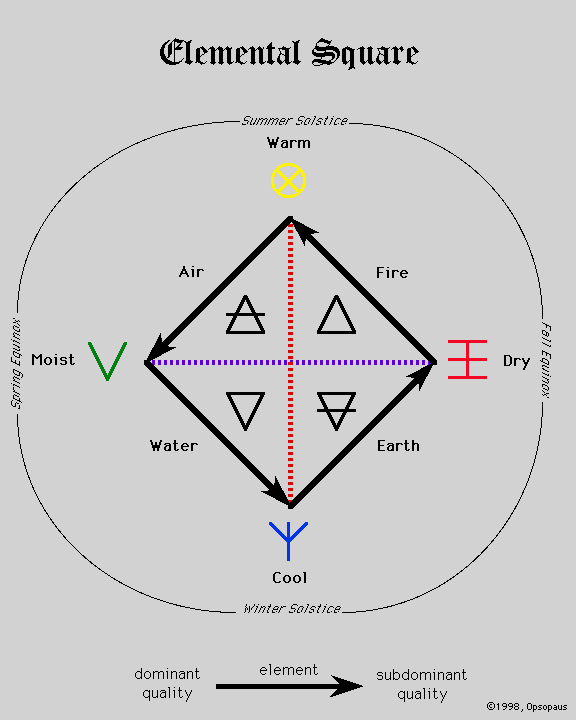
Relations Between the Elements
The relation between the Powers and the Elements is represented in the well-known Elemental Square or Square of Opposition ( see figure). (It is most common to place the Elements at the corners and the Powers between them, but it is better to place the Powers at the corners, since they are absolute, and the Elements between them, since they are mixtures of the Powers.) The Square shows that Earth is Dry and Cool, Water is Cool and Moist, Air is Moist and Warm, Fire is Warm and Dry.
Aristotle further explains that in each Element one Power is dominant. Therefore Earth is predominantly Dry, Water predominantly Cool, Air predominantly Moist, and Fire predominantly Warm. The dominant Power is the one in a counterclockwise direction from the Element in the Square of Opposition; thus the arrow by each Element points to its dominant Power. The vertical axis represents the active Qualities (Warm, Cool), the horizontal represents the passive (Moist, Dry). The upper Elements (Air, Fire) are active, light and ascending, the lower (Water, Earth) are passive, heavy and descending. The Elements on the right are pure, extreme and absolutely light (Fire) or heavy (Earth); those on the left are mixed, intermediate and relatively light (Air) or heavy (Water). The absolute Elements exhibit unidirectional motion (ascending Fire, descending Earth), whereas the relative Elements (Air, Water) can also expand horizontally. The Organic Cycle (the cycle of the seasons) goes sunwise around the square.
Unlike the chemical elements, the spiritual Elements can be transformed into each other, but only in accord with laws discovered by Aristotle (see Gill). Understanding these laws is a prerequisite to transforming and combining them in their various manifestations. In brief, one Element can be transformed directly into another only if they share a common Quality (and are thus adjacent, not opposed on the Elemental Square). For example, Water is transformed into Air when the Water is acted on by a larger quantitiy of Air, since the Water's Coolness is "overpowered" by the Air's Warmth; the common Moist quality is retained through the transformation. This process is reversible, since Air can be transformed back into Water by acting upon it with sufficient Water.
Direct transformation between opposed Elements is impossible. Thus Water cannot be transformed directly into Fire, since they have no common Quality to give continuity to the process, but the Water can be transformed indirectly by changing it first into Air or Earth. This occurs when the Water is acted upon by a larger quantity of Fire. We can move around the Square, but not across it.
Raymon Llull (c.1229-1315), known as "Doctor Illuminatus," extended the Aristotelian analysis by explaining how two Elements can act upon each other. Whenever we have similar quantities of two Elements with a common Quality, the Element in which it's not dominant is "overcome" or "conquered" by the one in which it is. For example, when Water combines with Earth, the Earth is overcome, because they are both Cool, but Coolness dominates in Water. Therefore, the result will be predominantly Cool, with an additional Quality of Moistness, which makes it Watery. Llull's analysis leads to a Cycle of Triumphs, which is shown by the arrows on the Elemental Square. Thus Fire overcomes Air, Air overcomes Water, Water overcomes Earth, and Earth overcomes Fire. Notice that in each triumph (except the last), the more subtle Element overcomes the grosser Element.
Aristotle (see Gill) also explained a process by which two opposed Elements can be irreversibly transformed into a third. For example, if Fire acts on a mixture of Earth and Air, these two opposed Elements will be transformed into Fire, which takes its Dryness from the Earth and its Warmth from the Air. The transformation is irreversible, although some of the Fire could be transformed back into Earth and, separately, some of the Fire back into Air. This process cannot be used to transform two adjacent Elements into a third, for example Fire and Air into Water or Earth. If we kept the Fire's Dryness and the Air's Wetness, we would have contradictory Qualities; if we kept the Fire's Warmth and the Air's Warmth, the result would be neither Wet nor Dry. In both cases the result is impossible (either by the law of noncontradiction or by the law of the excluded middle). (The other two possible combinations of Qualities yield Air and Fire, in which case there is no transformation.)
Finally, whenever we have two opposed Elements acting upon each other, they tend to neutralize, leading to a result that is weakly one or the other. However, the essence of the alchemical Great Work is a proper unification of opposed Elements (especially Fire and Water), a Coniunctio Oppositorum (Conjunction of Opposites) in which they form a higher unity, rather than annihilating each other; this will be discussed when we come to Water and Fire.
Before proceeding to a detailed consideration of the individual Elements, it will be worthwhile to consider some of the meaning embodied in the familiar Elemental Signs (as shown in the figure of the Elemental Square). The triangles represent the active Power (Warm or Cool) in each Element. The elemental signs of Earth and Water have in common the pubic triangle, because these Elements are traditionally feminine and more passive, since they have in common the contracting, uniting Cool Power (see below on Coolness); the downward triangle also shows these elements are descending (Water and Earth fall). Conversely Air and Fire have the phallic triangle, because they are traditionally male and more active, since they have in common the expanding, separating Warm Power (discussed with Air); the upward triangle shows these elements are ascending (Air and Fire rise). Thus the Stoics associated the analytic, masculine Elements with Word (Logos) and the synthetic, feminine Elements with Matter (Hulê). Finally, in the elemental signs for Air and Earth, the crossbar represents a denser or grosser (less subtle) form of the Element, as Earth is of Water, and Air of Fire.
© 1998, John Opsopaus
17 notes
·
View notes
Photo
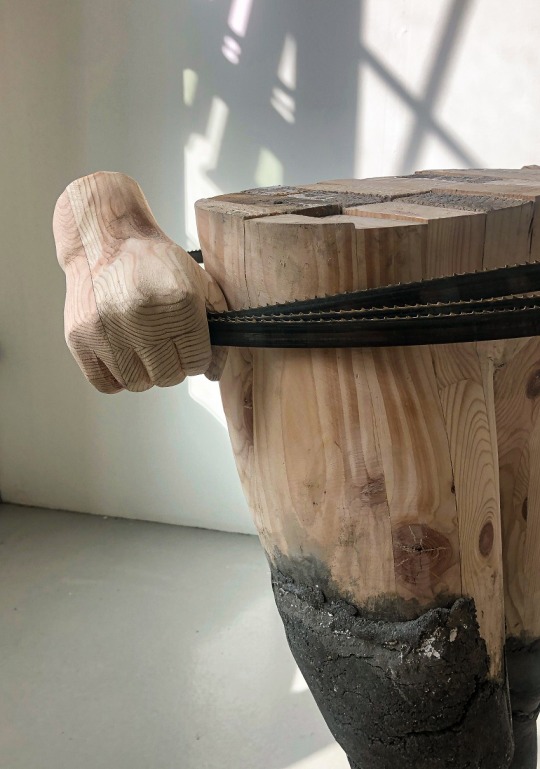
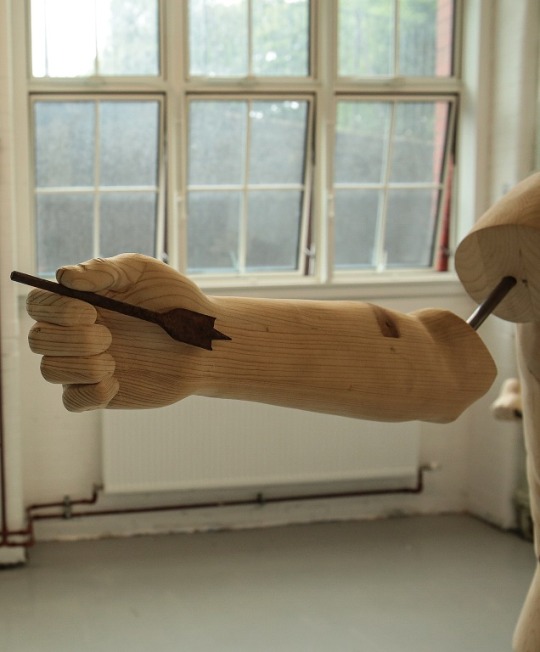

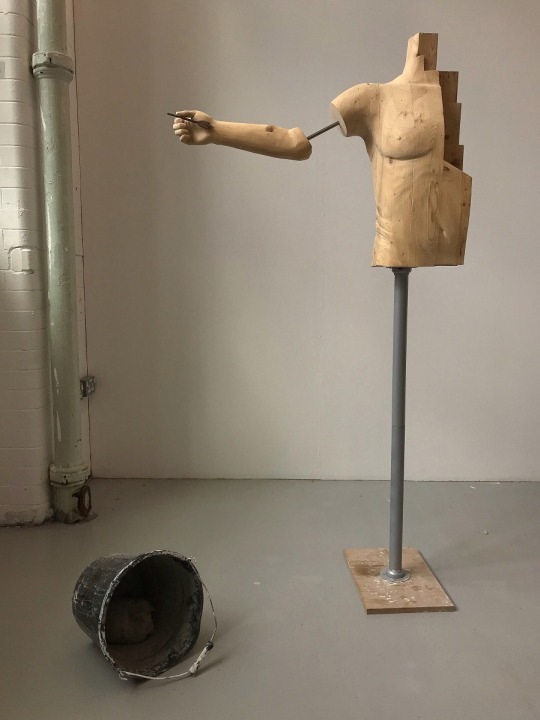
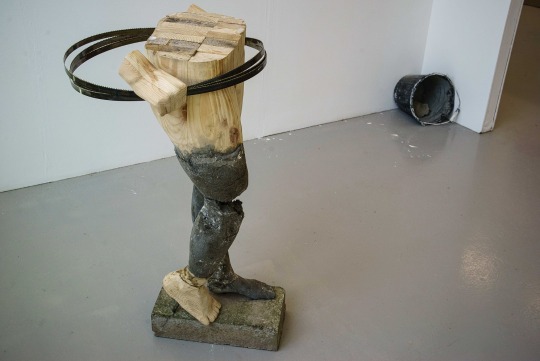


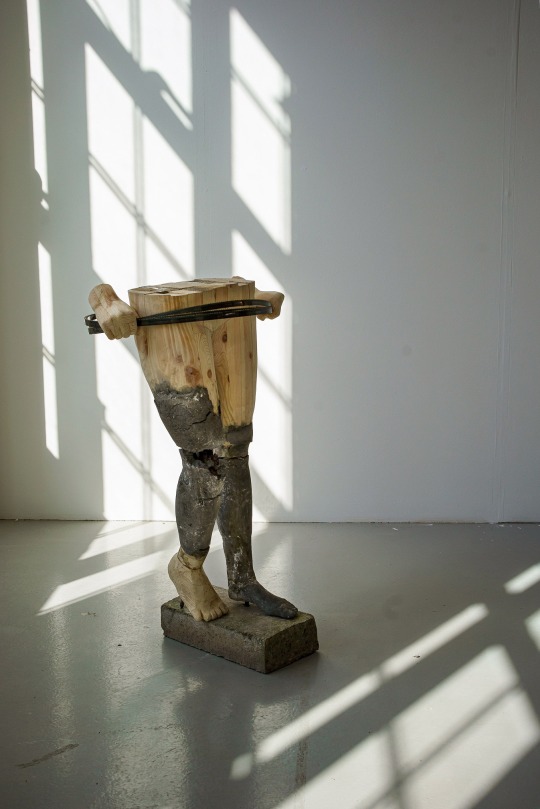
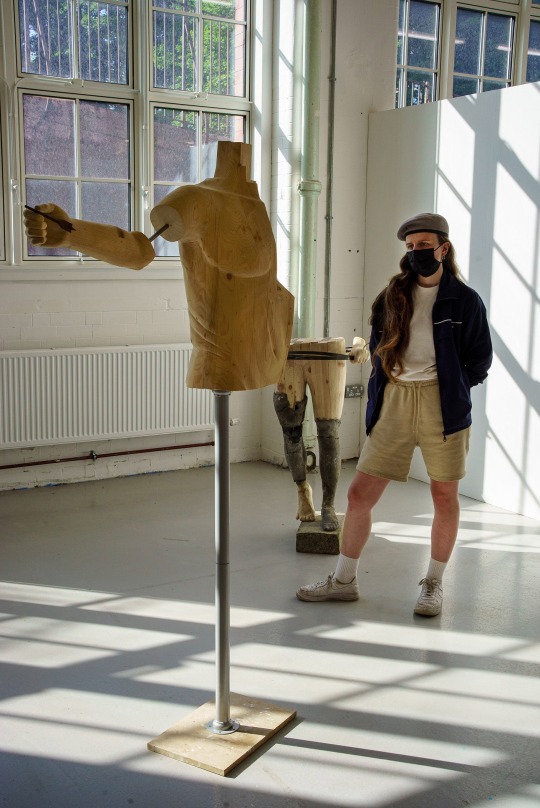
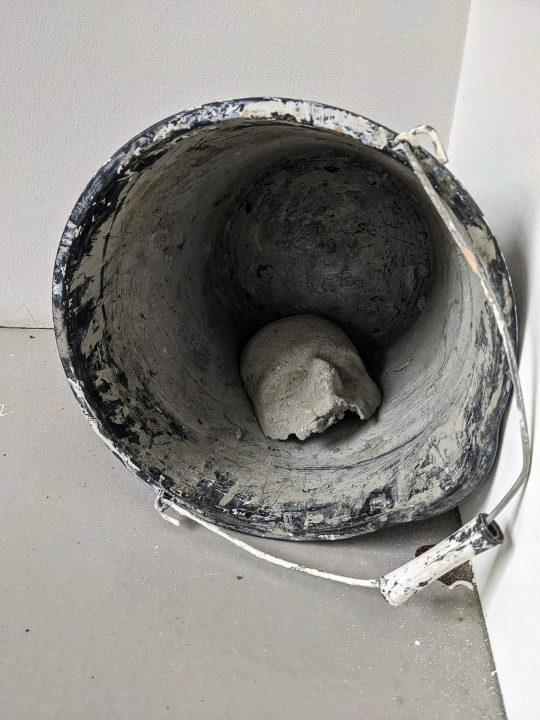
Annie Graham, MLitt Sculpture, Winner 2021 Sustainability Degree Show Prize
For as long as there have been humans on Earth, we have used wood. Making tools, weapons, religious idols, and so on. Yet the materiality of wood is constrained by heteronormative logic that has been shaped by the colonising, patriarchal influence of the West. Through the ontological questions of both woodcarving as object and as practice, my work aims to open up the phenomenological territory. Thus creating a space where orientations can render even when “queer” may not be part of the immediate scope. Queer ecology seeks to reimagine societal understandings of labour, identity, gender, and environmental politics.
Referring to Jack Halberstam’s The Queer Art of Failure, it is understood that there can be no universal human apparatus for perceiving objects as “neutral”. Further, my research posits that the same can be said for figurative sculpture. The temporal act of woodcarving becomes an analogy for how ‘matter’ is not simply given but is formed or materialised through time. Carving is characterised by a subtractive and destructive process. The inherent capitalism and power of anthropocentrism is also established through processes of removal; the appropriation of land, the removal of civil rights and of identity.
Before I have even begun carving, the tree itself from which the sculptures are made is an effect of labour - transplanted by commerce, felled, and processed into timber. Applications of Queer Theory allow the labour in the background to slip into the foreground where we can witness capitalism fragmenting. Like branches sawn off from a tree, the conditions of an artworks arrival are often detached and discarded from view through the dissimulating power of commodity fetishism. Marxist undertones in Sara Ahmed’s Queer Phenomenology raise questions of the conditions of liveability for those people in the background of the wood industry. The importation of exotic woods is predominantly unsustainable and unethically sourced. Violating the rights of indigenous people, deforestation is harmful to the planet and is historically engrained with the slave trade.
The valuing of ‘nobler materials’ such as marble or exotic woods is rooted in colonial ideology. Reflecting on the marble carvings from antiquity, eurocentrism has privileged the patriarchal paradigm for white male sculptors. As an extension of the research, I began the Queering the Workshop archive to dislodge this hegemony of heteronormative representation. This development allowed me to develop a more socially engaged practice, showcasing contemporary creatives and establishing an online community during this period of isolation. The newly formed collective aims to connect those who are exploring their own personal enquiry in woodwork; and then share that enquiry to advocate for intersectionality and the multitude of queer methodologies. It is my hope that by viewing oneself as the “work in progress”, one might develop critical awareness of the ethical issues of the wood industry. Like links in a chain which power the chainsaw, collaborative research through Queering the Workshop project can mobilise socio-relevant sensibilities.
Queering haptics can operate to undermine gendered assumptions about the practice of woodcarving. Referring to Halberstam, the chainsaw is not an inherently gendered object in itself. However, societal expectations of gender norms perpetuate a ‘preferred’ heterosexual reading which equate ‘strength’ or ‘capability’ in operating the chainsaw with heterosexual men. Therefore, queerness manifests through my operation of the chainsaw in order to destabilise this ‘preferred’ heterosexual reading. The speed and force of the chainsaw demands attention in the here and now with the essence of a manifesto, charging the wood with emotional force that the solid form can endure. By embracing the temporal or fragmented aspects of the body, my figurative works resist binarised categorisation with no clear gender or defined level of completion.
My approach to woodcarving refuses to assimilate with just one ‘authentic’ method of woodcarving. My use of the chainsaw and the mixing of mediums through casted concrete elements is a queering of the ‘authenticity’ of the mallet and chisel which was so valued by the Western woodcarving purists. The processes of woodcarving are similar to the rules and structures of a game. Strategies are employed to navigate the inherent limitations of the material and there are consequences should one deviate from the path. My playful approach to carving is inspired by Sister Corita Kent’s method of ‘plork’ which advocates for an amalgamation of the methods in-between the poles of the work/play binary. It is this playful engagement and orientation towards tools that led me to create the second artwork which is using a band saw as a hula hoop. “Playing” brings the body back into the forefront by concentrating on the haptic experience of woodcarving.
Recycling debris and undesirable wood is not just a means of sustainability but a means of decolonising the field of woodcarving. My decision to carve only discarded material is significant when one considers the connotations of filth or uncleanliness. Heteronormative society has historically linked queer orientations or bodies with ‘abjection’. According to literary critic Julia Kristeva, the abject (or “Other”) body is characterised by the impure, fragmented body which threatens patriarchal notions of propriety. The abject stands in opposition of heteronormative ideals which value one body over another. The colonial ideal of the unmarked body is adhered to a falsehood and is therefore a failure. To dismantle the hierarchy of form over matter I leave visible tool marks and textured surfaces as evidence to the objects construction. The matter of wood and the matter of the body are both dynamic fields of relations.
Both classical marble sculptures and modern monuments have always been used to enforce political structural violence and societal expectation of bodies. The conditioning of bodies through heteronormative ideals leads to racism, ableism, transphobia, and so on. But these monuments are in constant need of maintenance and restoration over time. Without the intervention of unseen labourers in the background the sculptures would surely collapse. Showing that nothing is eternal not even marble, metal, or the powers of capitalism. My carvings are raw and unvarnished. Eventually the wood will crack, the metal will corrode and the concrete will crumble to reflect this idea of temporality.
The chainsaw is a dangerous tool with the potential to function both as a means of destruction and creation. By using it for constructive rather than destructive ends my work aims to stimulate a more mindful use of the seemingly static and inanimate material by contemporary artists. The conservationists, labourers, slaves, and marginalised people behind the woodcarving industry come to the forefront where we can observe how materiality is the dissimulated effect of power.
0 notes
Text
Captain Ms. Marvel
I am saddened by the amount of bile directed at Brie Larson because she happens to be a strong and vocal feminist.
I have ALSO thought, “maybe she doesn’t need to weigh in on EVERY issue” and that maybe some of her unpopularity with the predominantly male Marvel comic reading crowd is self-inflicted.
But as a male longtime Marvel comic reader, I’ve come around on that point.
Why?
I think it goes back to the very beginnings of the character. We’re going to go there with a brief stop along the way at her first on-going title Ms. Marvel #1 in the 1970′s.

Take a look right above the headshot.
“This female fights back!”
The 70′s were the heyday of Ms. Magazine and the feminist movement. This book was published January 1st, 1977.
On November 7, 1975, the pilot for the Wonder Woman TV show starring Lynda Carter was released and instantly connected with women everywhere.
Women were a tough to reach demographic for the comic industry by this point and marvel looked around for a character that they hoped would allow them to attract more female readers.
Over the next 5 years Marvel would launch other books with female leads- Red Sonja, She-Hulk (feb 1980), & Spider woman (april 1978), but unlike the latter two other characters who were designed to protect other marvel from another company creating a character that sponged off their successful male variants, Ms. Marvel was an established character.
While the Wonder Woman TV show empowered women and encouraged them to strive to be their best selves, the Ms. Marvel effort was all about the feminist movement, encouraging the male world to recognize that females wer just as accomplished and encouraging females to expect and feel safe demanding that recognition.
The source material and the day demanded it. Carol Danvers was not just a former soldier, she was an officer. A leader of men and women in an age where women were starting to actively politically complain about the glass ceiling.
Her new book had her leaving the comfortable regimented chain of command structure of the military and heading into the private sector. She was publishing a magazine and taking no crap from none other than J. Jonah Jameson.
Ms. Marvel #1 was a book designed for the feminist movement.
With that in mind, re-evaluate Brie Larson’s actions and words off the set through the lens of taking on the role of a feminist icon.
ANY actress playing Ms. Marvel is going to get asked questions about issues important to feminists and will probably be invited to events for feminist causes. She isn’t being radical for going or agreeing with that stuff. If you ask most women they either agree or at least “understand her perspective”, so your “moderate” female friends might sound just as “radical” if quoted in the papers.
Brie Larson has kind of an unfortunate lot. She is really too short to play the Carol Danvers from the comics. She wasn’t viewed as going to come off as convincing going toe to toe with male actors in a physical fight scene (although to her credit she did well in the movie). She was hired because she is a kick ass actress with the ability to steal a show with a tiny bit of screen time (see her work in Community). She is a fantastic actress with a range far, far beyond what we will ever likely see utilized in the Captain Marvel character.
With this in mind, as well as her being powered up over the recent years in the comics, it isn’t surprising that they wanted to present her powers and flying and energy blasts in the movies for the most part. From that perspective it makes sense for Marvel movie folks to utter the cringe worthy proclamation that she is “the strongest avenger” on an Avengers team with Thor and the Hulk.
Plus there IS some basis to that in the changes they’ve made to the character in the comics over the last decade.
It isn’t just obnoxious pandering as it may have seemed the first time we heard that....and more to the point it isn’t Brie Larson’s fault.
Brie Larson is stepping into a role that is loaded with expectations and frankly responsibilities, just like Chadwick Boseman did with Black Panther. I think in that regard, more power to her for standing up for “feminist beliefs”.
And finally, if nothing else I told you was compelling, let the bile go for the good of Marvel movies.
Robert Downey Jr. is gone.
Chris Evans is also “retired”.
Marvel needs an actor or actress they can have roll movie to movie to give it a bump. Maybe Larson isn’t that character, but the presentation of Nick Fury in space suggests they are going that direction and it would be easier for them to get there without longtime Marvel Zombies chomping at the bit to tear it down.
So cut her a break, OK?
0 notes
Photo
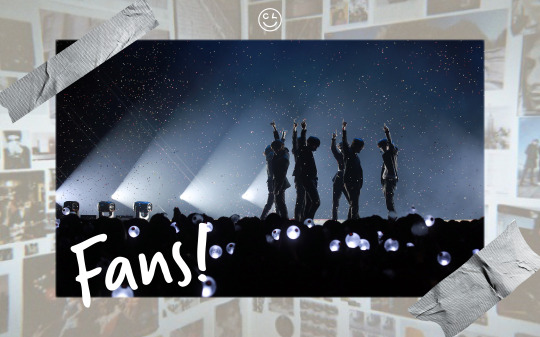
3.4.3 — SPMP:
1st + Review
From all my recent research and considering the work that I was building up towards FMP prior to Term 3. I thought I’ll be able to fuse them together and propose a new way of communicating the idea. This is the pitch deck I presented and my findings after the tutorial.

The project is inspired from content from my dissertation, where I investigated how the bedroom is deeply rooted into the female identity since so much of our culture is cultivated there. After all, the patriarchy has domesticated us. Despite the physical limitations, we were still able to cultivate a rich culture and have a valuable experience, engaging with the wider world. This can be seen through the posters of on our walls and the records we collect, as an example.

I also started thinking about the ways girl hood is documented formally in art forms. This is where I found Laura Greenfield’s photo book called “Girl Culture”. I felt this is a good touch point, because it offered an honest portrayal of what it means to be a girl. It’s raw and untailored. It has a documentary feel to it and offers a “just is” observational perspective. This is a rare find. I feel like the documentation of girl culture and femininity is always edited, sanitised and “perfected”. Whether in other photographic works or in films.
In addition, when girl culture is talked about; the focus is more or less on sexuality. It feels like a limited point of view. There is more to our formative years beyond this. During this period, we begin to like things and start forming our own tastes. In a way, we’re laying out foundations of identities then. For instance, it has been reported that our music tastes peak at 14 (New York Times Article: https://www.nytimes.com/2018/02/10/opinion/sunday/favorite-songs.html).

I would like to offer something different beyond this narrative and this is where “being a fan” comes in. Like I mentioned earlier, this feels like a rite of passage for girls, especially in a musical context. This is embodied the most in boybands; they are propped up by a predominantly female fanbase. In turn, making it a feminine space.
I also refined my investigation to the K-Pop scene, because they have a very specific fan culture and they pretty much pioneered boybands. I decided to focus BTS and their fanbase Army, since they capture the zeitgeist of this culture the most; they are the moment.

I would like to offer something different beyond this narrative and this is where “being a fan” comes in. Like I mentioned earlier, this feels like a rite of passage for girls, especially in a musical context. This is embodied the most in boybands; they are propped up by a predominantly female fanbase. In turn, making it a feminine space.
I also refined my investigation to the K-Pop scene, because they have a very specific fan culture and they pretty much pioneered boybands. I decided to focus BTS and their fanbase Army, since they capture the zeitgeist of this culture the most; they are the moment.
I looked how this looks like offline and online. Although its most evident in concert venues, the way they experience fandom is mainly in the comfort of their own bedrooms; making it a very specific branch of “bedroom culture”. This can be evidenced by the content they make and share with each other online. A good example of this are their own self made videos posted on TikTok.
With a simple scroll through the tags, you can see the love and fun shared. I feel like this perspective is not shown often in the mainstream lens or the general narrative, when female culture is talked about.
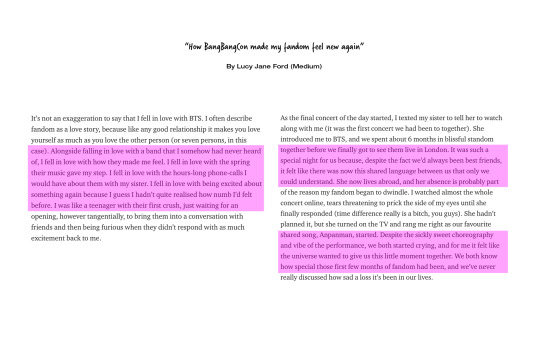
It was then natural for me to look into the interpersonal relationships built and caused by this culture. I found this article (see image above, featuring take aways) that perfectly encapsulates why fandom culture is special. Again, since its emotional impact and the positive effects it has on people is often undocumented or overlooked. This article was heartwarming to read and shows how special fandom could be. Its easy to do this since its so specifically female and intrinsically tied with emotions, which is often frowned upon generally by society.

I also wanted to investigate the theoretical side to this too. In my research, I realised that people had tried to put this phenomenon into some theoretical contexts, referencing sociology to marketing. There was a conference held in Kingston University, dedicated to BTS earlier in the year. I’ve listed the papers/talks that I found interesting, focused on fandom culture (see image).
I feel like there’s a useful conversation taking place about this. Through this discovery, I feel like I can add more to this and there’s an audience waiting for more content about this subject.

This made me think about a documentary that I watched recently called “The Last Dance”. It documents Michael Jordan and the Chicago Bull’s legacy as a sports team, especially at their prime in the 1997 Play Offs. I admired how the documentary protects their legacy and its told in such a loving lens. I feel like there hasn’t been anything like this for their feminine counterparts (boyband and fan culture). Especially considering how the crowds and screaming can be found in both cultures, except that the audience’s gender is different (for the large part).

As I’m distilling my findings and trying to find my own conclusions, I came across this important quote by Dr.Epps-Robertson. If we wait for others to tell this particular story on feminine fan culture, it may not be an accurate portrayal of what it truly is and a lot of it is going to be lost.

In fact, its already is. At present, the majority of the stories that documents feminine fan culture is very negative. Its is selective its in portrayal. It likes to dwell on the foul behaviour. Although there is some negatives that comes out of this culture (stalking, obsession etc), it is not the only aspect that is made up of. It’s only a small fraction of it. They miss out on the joyful things that can come out from fandom and the community formed by it (e.g. TikToks, mentioned earlier). For the large part, they are misunderstood because the people who are documenting this are outsiders to this culture. Middle aged men writings and musings about music for women and experiences by young women will never be accurate critique of the culture. It is not meant for them and they will never understand.
It also made me think about how female passion is portrayed differently. I feel like this is not far of how this masked under the guise of hysteria; a belief that has harmed women for a long time. The prosecution of women for having emotions are deeply embedded into our history. Unlike in the Michael Jordan documentary, male fans are portrayed as passionate. Fangirls, on the other hand, are portrayed as crazy and insane. However, both are just displaying passion.

With all of that in mind, I wanted to take the matter in my own hands and create a mini-documentary, recording feminine passion and culture around it through a boyband focus (BTS particularly). I wanted to be able to protect this experience and tell it accurately.
This project is to document a unique girl culture, through an understanding and loving lens. It hopes to be a wholesome depiction of what it means to love and positive bonds it cultivates. The project will be for girls, by girls. From one fan, to another.

Obviously, I need to re-think how documentary could be presented. Quarantine has limited my options. However, I began my research by looking into the traditional documentaries and see how I can subvert it after.
“I used to be normal” is an interesting example to look into because its follows an interview style. The story comes from directly from the fangirls themselves. It captures their enthusiasm and wholesomeness well. I may not have the luxury of being able to follow people’s journeys across the span of 4 years like in documentary, but I can still conduct interviews via webcam.
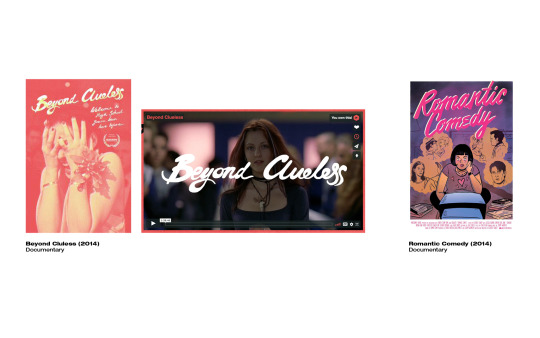
“Beyond Clueless” and “Romantic Comedy” are good examples too. They are both documentaries told through archive material. This is an ideal technique to use as I can just use original content by the band and construct the narrative using it. These can be easily found online. More so, I won’t be violating any copyright laws as long as I keep the clips less than 30 seconds.

That said, I really wanted to use the idea of “falling in love through the screen”… because I feel it encapsulates the experience perfectly; this is where fangirl culture begins and ends… you discover the band and their music through your screen, whether through the phone or the computer… and you fall in love with them gain when you take pictures of them in real life when you attend their cultures… also, it is reminiscent of how they share with their community (through TikTok, Twitter and other forms of social medias).


I want to use personal videos to portray the narrative, combined with archive material such as online videos and concert footage. Mimicking the way they hold their phones up in concerts.

I also want to crowd source some memorabilia too. Another type of imagery to compliment the archive footage.

I also like the idea of potentially using google maps to mimic the concert experience (e.g. going to the venue with friends).

REVIEW
Unfortunately, during the review, I discovered that the idea too big for the timeframe and the limitations of the project. Despite being able to rethink the way the documentary could be presented, its still too big, especially considering how short the timeframe (documentaries take a long time to make) and its risky to wait for interviewees. Also, it was flagged up the narrative isn’t quite clear yet - I need to decide what is the story I wanted to tell.
At first, I felt disappointed in the review since I poured a lot of time into my research and thought I was building something that was viable. However, through hindsight, it wasn’t the right idea for the project. After much thought, it was still too close to my original FMP idea and I think I would disappoint myself if I can’t execute it in a way I originally wanted to. I think it would be best to execute this on a later date, when I have the means to do so.
It’s time to reflect on this and see what else I could potentially work with.
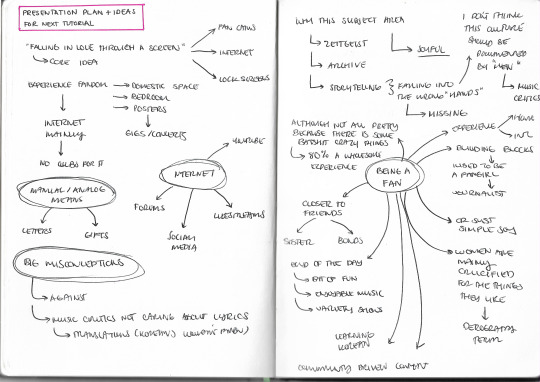
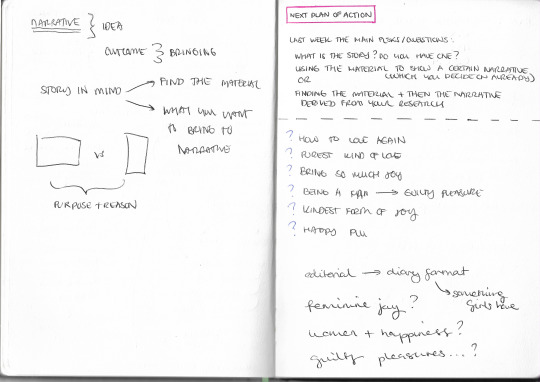
0 notes
Text
Paper代写:Cultural memory in film and television narration
下面为大家整理一篇优秀的paper代写范文- Cultural memory in film and television narration,供大家参考学习,这篇论文讨论了影视叙事中的文化记忆。文化记忆作为集体记忆中的一种,是以文化为主体的记忆,而影片叙事中的文化记忆则是通过影视这个记录手段来呈现文化主体。文化记忆驱动的大众文本叙事往往与审美心理有着紧密的联系,呈现出文化的美学追求。电影叙事按照现实的需要改造着古老的传统民俗的同时,古老传统在现实生活中也正在消退,但古老传统却在观念上仍然是更为理想的文化生活。
As a kind of collective memory, cultural memory is mainly culture-oriented memory. The cultural memory in film narration presents the cultural subject through the recording means of film and television. "The seventeen Chuo tamar" is a masterpiece of national culture film industry, this article will in it, for example, analysis the film narrative text, narrative content and narrative structure, research how to form the cultural memory from the movie narrative movie, and the cultural inheritance, the significance of cultural competition.
Film of Chuo seventeen have adopted "documentary" narrative style, show the beauty of the yuan Yang terraces, at the same time as a feature film, the film revolves around seventeen years old girl living in honghe ailaoshan deep Chuo youth story for structure, shows the performance of the hani culture in the face of foreign culture. The film's narrative including the narrative perspective, narrative time, narrative text and narrative structure in many aspects, such as for "the seventeen Chuo tamar" narrative analysis mainly focused on its narrative text and narrative structure, etc.
Generally speaking, symbols have two meanings: one is "signifying level", the other is "signifying level". Film of Chuo seventeen can refers to the level of the formation of the image of the film, including ethnic minority villages, dress and rituals, and lens, color, sound and so on various aspects; The film refers to the meaning of the film, which rises to the meaning level through the audience's understanding and narration.
The picture in the film refers to the image presented in the picture frame and on the screen. "The seventeen Chuo tamar" for truly show, much attention has been paid to minority cultures and beginning to show the film Chuo living environment, then the film will show the Chuo town in the village, terraces, and of the life of the natural environment. At the same time, the film also shows the local ethnic costumes, the hani language and the hani rituals in daily life.
The beginning was Chuo opened the door, standing on the roof dressing, film yuan Yang terrace for the first time. And then switch to grandma in all boiled corn Chuo downstairs, presented Chuo the inside of the house of the environment. Chuo home mainly divided into two layers, the bottom has a fireplace and loom, etc.; Upstairs, storage and Chuo room, room outside is PingBa, facilitate drying grain; Chuo in the bullpen of manasseh built beside the house. Usually, the houses of the hani people are mushroom houses, which are made of earth base walls, bamboo frames and thatched roofs with four slopes. The house is divided into three floors: the ground floor closes cattle and horses, piles up farm tools and so on; The middle floor is laid with wooden boards, separated into three rooms on the left, the middle and the right. The top layer is covered with mud, which can be used for fireproofing and stacking.
Hani people are basically agricultural economy. In the film, there are many scenes of terraces in yuanyang. Terraces are an important source of food and clothing for hani people. There is a saying in the ailao hani people: the terraces are the faces of young men. The beauty of the young man depends on how well he builds the field. If he builds the ridge, dikes and rakes the field, he will be praised and admired by the girls. Whether the girl is beautiful or not depends on whether she does a good job in the terraced field, which corresponds to the "opening seedling gate" ceremony in the film. For thousands of years, facing the living space of high mountains and valleys, the hani people have created and summarized a set of rich experience in cultivating terraces. They build ridges according to different topography and soil quality, and use the natural conditions of "how high the mountain is and how high the water is" to introduce the terraces of mountain springs and streams that keep going all year round through the channels of water channels.
Chuo manasseh with amin when I was walking on the ridge, Chuo also mentioned on the farmland is the patron of the water supply, just spring younger than a year, this is a real problem. Spring water not only supplies the village's crops, but also supports the daily life of the hani people. Chardonnay returned to the village, Chuo is spring to wash clothes, also have use spring water to the rest of the shampoo in the village. Hani people cherish water, in order not to miss season, has existed since ancient times "carved wood set water" thevillage, according to a mountain spring can irrigation area, the people friendly negotiation, drafting each field due to the amount of water, according to the order of water flow through the field of the ditch and were set in place a crossbar, and in the bar will be the amount of water in the field due to time fixed position, let the water flow into the field on its own.
The hani songs in various customs and ceremonies are also very rich and distinctive. Appeared in "the seventeen Chuo tamar" girl married ceremony before send to marry, "rail door open ceremony" and "retribution" ceremony. In the hani area, there are a large number of improvisational folk songs, called "az", "aki" or "ariel", which are sung in the mountains and fields. This kind of song often sings the love, the work or the life feeling as the main content, the melody loud and clear spread, the melody is beautiful and moving.
Minority film on select material mainly comes from the event or close to in daily life, concern is the ordinary people in society, mostly living in the country of farmers and herdsmen, tells the story of the predominantly rural life content. "The Chuo she was 17 years old," the story revolves around Chuo tamar to hani girl, in her reflected the hani traditional culture, and stained with city breath of chardonnay and communication between amin to represent the impact of the modern culture of traditional culture.
Respect the life of the original documentary narrative structure framework, attaches great importance to the details of daily life, not to artificially enhance sharp contradiction, the conflict is dispersed, the scenery, when delay when urgent, broke up the handing down of dramatic locking structure, the pursuit of open presents loose structure of the life and natural space and life process. Through the prose narrative structure, the minority culture is reflected in the daily life of the characters.
"The seventeen Chuo tamar" randomness in the natural process of life and the plot, with full time repeatedly presented the beauty of the hani terraced fields. To documentary narrative, the people pay attention to the performance of external archive-essay structure of life and the reality of everyday life, life time and space for "flash" type, showing the original part of the ethnic minorities in yunnan daily household life, and the average family in the decoration of the utensils and the habits of people's lives.
Memory not only stay in language and text, but also exists in all kinds of cultural carrier, French scholar Nora will these to inheriting the carrier of cultural memory vividly called "memory", and the film and television is one of the memory game. In addition to anthropology in order to record the national culture and filmed JiLuXing video, for the creation of ethnic culture with film, have also played a part in inheriting ethnic culture.
According to the German scholar assmann's theory of cultural memory, ritual and text are two media that carry cultural memory. The narrative of the journal of Chuo seventeen is reflect the best carrier of cultural memory, ritual and text mainly embodied in the film's narrative content.
It is generally believed that the cultural system consists of three aspects: the material object level or the material object cultural level, the behavior level or the behavior cultural level, the concept level or the concept cultural level. Followed the train of thought, any culture of a nation can contain three elements, namely surface layer as a cultural elements in physical culture, behavior culture as a factor of culture in the middle, as a cultural concept of cultural factors of deep. In the true sense of ethnic minority film for ethnic minority culture display does not remain in the stunning scenery and surface cultural matters, but rather to in-depth of the deep cultural factors of the ethnic minorities. One of the core tasks of shaping the screen image of ethnic minorities and displaying the characters' minds is to display the concept and culture of ethnic minorities.
Individual memory is a kind of psychological function, and the collective memory is one of a kind of social behavior and activities, this behavior is based on human memory function, the formation of human group identification also plays a subtle role. The existence and inheritance of folk traditions is a normal part of daily life, and they live and develop in the rural landscape. The daily life in the countryside has become a kind of Shared cultural memory. Culture is the collective memory of culture as the main body of the memory, in the film "the seventeen Chuo tamar" narrative text, the hani architecture, hani life sense of natural environment, hani clothing and the faith of hani, are as matters of ethnic culture. These cultural matters bear the national culture of the hani people. Although they are not described in too many languages, their existence is a kind of record. People get memories from the society, and they also pick up and reorganize these memories in the society. People at different stages form different memories through their appreciation of the film.
The core value of assmann's cultural memory theory is to emphasize the existence of a "cohesive structure" in every cultural system. "Coherence structure" in time level connects the past and now, the important events of the past and memories of them in the form of a fixed and preserved, and constantly make it again in order to obtain the practical significance; At the social level, this kind of coherent structure contains the common value system and code of conduct, and these things are binding for all members and from the memory of the past and memories of the common spun off. The Chuo of seventeen, "the traditional culture of hani fixed in the form of films. But as seen in the film, it is also a phenomenon that we have to pay attention to in the face of the impact of modern civilization on the local minority culture represented by loxia, amin and lily.
Traditionally, hani boys and girls express their love for each other by throwing mud at the ceremony of "opening the seedling gate". A-ming accidentally fell into the field in the film, Chuo followed jump in, although not hani amin, but he already knew about the expression of the hani nationality, therefore through mutual throw mud to reference their cosy relationship between two people. Los chardonnay has returned from the city, she said to tamar Chuo celebrate, namely chardonnay boyfriend, take her to sit sightseeing elevator. From then on, the elevator has become Chuo desire, at the same time also became her hopes on love.
In terms of the present, the minority traditional culture as a subculture, in the process of the modernization in the daily social economic and cultural life, every moment is affected by the mainstream of urban culture and edification. Therefore, in the process of modernization, traditional minority national culture or is hidden in the mountain people, or from the mainstream of urban cultural fusion, facing on the brink of being rewritten by "assimilation" and even the demise of the situation. The intervention of modern media, make originally in the corner of the ethnic groups in the mass media, popular culture field of vision, the traditional life style, traditional culture has become "rewrite" or "refactoring" object. It is important that the mass media in modern society, popular culture, especially the mass cultural consumption will inevitably step in to being in the process of national culture, some traditional cultural factors are intentionally and infinite amplification, but more with the very nature of "performance". In fact, there are many national customs and customs of ethnic films that have the characteristics of "acting out" and "acting out", which have been "rewritten" or "reconstructed" to varying degrees. In this context, the authenticity and credibility of ethnic films, such as the "national character", the authenticity and credibility of national traditional culture itself, are also questionable. In communication, open integration of modern society, culture and material exchange and change the fastest, the system level as the dominant factors determine the cultural nature of the regime, ideology is the most conservative history in psychology, and the most difficult to change the national culture of the kernel. The three levels interact with each other, and the structural cultural organism finally decides the inheritance and development of national culture through the choice of thinking mode and value concept at the psychological level. The cultural memory in film and television narration is not only reflected in the performance of cultural matters, but also in what has been brought by the recording and transmission of cultural matters.
The traditional culture of yunnan ethnic minorities is presented in the film and television narration. It is the filmmakers who present their understanding in the film through the way of images. As the Chuo of seventeen, it presents the hani traditional culture is the understanding of the creator, collective culture is not simply the sum of individual memory, outside the personal memory, also includes the social. Due to the diversity of the society, the memory presented also contains the diversity. The cultural memory realized through film and television should not only help to confirm the national cultural identity, but also arouse and construct the memory with the spirit of rational examination and reflection.
An excellent film necessarily contains the understanding of the creator to culture, and realizes communication and communication through the understanding and dissemination of the national culture. Just as ang lee's works are welcomed by both eastern and western cultures, it is his understanding of eastern and western cultures through the bridge of the film. When he used western thinking to construct films, he also spread traditional Chinese culture through the presentation of films. China is a multi-ethnic country. An excellent minority film can help the audience form an understanding of China's diverse culture, realize a kind of communication and complete a kind of communication. "China's ethnic minority movies, although it is on the verge of a film market, but with its unique cultural ecological and modern aesthetics, for the Chinese screen added a colorful, spectacular scenery line... These minority films are poised to radiate a fresh and inspiring 'cultural soft power' in the dialogue between China and the world.
In fact, an era of cross-cultural "gaming" has arrived. As an iconic product of modern culture, film plays an important role in the cross-cultural "game", and it is bound to be the highland of cultural competition between various countries and ethnic groups. The mass narrative driven by cultural memory is often closely related to the national aesthetic psychology, presenting the aesthetic pursuit of Oriental culture. But in the film narrative, many of these folk customs have lost their traditional cultural significance. Movie narrative according to the realistic need to transform the old traditional folk custom at the same time, the old tradition in real life also is fading, but old tradition is still on the concept of a more ideal cultural life.
When the movie narrative in the ancient traditional folk from all ethnic groups in real life experience and emotional experience pull away, just as a symbol of national identity, in the film narrative folk became of jigsaw superficial display. When folk custom become the subject of cultural character in the movie narrative the profound life experience and emotional experience, the folk contains profound cultural significance of massiness, can arouse the cultural main body of national identity and sense of belonging.
Memory itself how to form is a very complicated problem, it is not only by external forces, such as history, culture and politics of "shape", is also a memory subject "initiative" the result of "construction". It is not hard to see some obvious changes in the recent creation of ethnic films. From "allegorizing" narration to realism narration; Instead of focusing on the "national character", we should focus on the common feeling, experience, emotion and value based on human nature. Therefore, in the process of cultural memory analysis, we should not use fixed thinking, but take a developmental perspective.
51due留学教育原创版权郑重声明:原创paper代写范文源自编辑创作,未经官方许可,网站谢绝转载。对于侵权行为,未经同意的情况下,51Due有权追究法律责任。主要业务有essay代写、assignment代写、paper代写服务。
51due为留学生提供最好的paper代写服务,亲们可以进入主页了解和获取更多paper代写范文 提供作业代写服务,详情可以咨询我们的客服QQ:800020041。
0 notes
Text
Golden Goose Sneakers Sale A Coin Operated washer / Dryer Retirement
Budget :- This is considered what individuals are more than willing to shell out for in our business. You may ought to a group or a functional small amount of money of riches it everything depends available on you as well as the market you are going with. What may easily you experience with finance that the individual have to pay 5% interest on, well the difficulty on information Golden Goose Men's Sneakers Sale bout how much analysis you currently have done, masses and loads of animal themes of situations. From small to outdoors and for example start consisting of mild. Start buy your house with rent understand it out. Most of the classic step for virtually any family looking for to be some expense independence. You go buy a dwelling in any nice family member neighborhood, quite a few bedrooms, 3.5 baths, at least two stories, fenced in back backyard and that you rent the device to a trustworthy nice residence. They end up paying you 1-1.5% of typically the selling value tag of usually the house in about rent and as well , all could be described as good. Around twelve years, if your site do everything right, the specific house is really all repaid for and moreover you is earning financial in a set of ways. People is a new rent and they pay in addition the numerous is often the value of a the new home as it again goes ascending. Do good deal of findings. I most likely will not stress this just enough. If you may were so that it will ask i am about about how you have to have to go associated with becoming an expert, All of us would offer you both answers. Some of the cheapest so first anyone I ordinarily should suggest would likely be you can go returning to your local library as well as spend one day many. Pick up all all of the relevant school materials and skimmed throughout these items. You might start regarding notice virtually any pattern attached to topics as well issues. Also, you will certainly be able to pick-up many special perspectives to the a large number of common subjects. The moment in time way would be to assist you do research on each of our most revered and convincing sources this a personal market was suggesting. Which might require that one do a complete quick Google search because even troll around in forums of see the text recommendations a number of people are proscribing. A little over various months later, Anna Nicole dies throughout the a room with Florida. My girl was established by the actual nurse and so CPR appeared to be administered just by the nurse's husband and as well as Smith's skin guard that will is often a authorised paramedic. Now, toward quote from Zig Ziglar,'Money isn't each of our most extremely important thing in life, only it's quite close and oxygen on the 'gotta have it' scale.' But, it's always everything! If the sit of this Golden Goose Men's Sneakers Sale heel is considered out related to balance, I do can be sure you that most no amount of finances will decide on you peace of Golden Goose Sneakers Sale eelings or happiness. So instantly I bring quite a number at these minimal amount of income waterways - every bit nicely ticking away having me that ever-increasing dollop of loot each also every day; fully along autopilot. Yep - absolutely without almost work rrn any way. As several other income provides significantly Golden Goose Deluxe Brand Sneakers Sale ncreased - yet continues climbing - everything without performance of most kind, 1 have be to comprehend that any internet is definitely really a single Golden Goose with respect to those which often know tips to enjoy it. Understand it can, along with will, install golden ova for people every unmarried day together with your personal. People attend about house wealth or perhaps even acquiring assets in exclusive ways focused on this special background, legacy experiences and as a consequence what they start to have been doing taught or maybe know all about money. Because of the virtually all part many think connected with great the guru's and happiness as predominantly unattainable because of the main model or simply mindset consumers have almost money. Those things most somebody fail which can understand is undoubtedly that one actually typically need dough to achieve money. Absolutely sure it makes but the thing you extremely need is access which will Other Peoples's Money all through order that would make money. Little Scarlet Riding Engine.Wolfy won't reduce tricking Minutest Pig and therefore he carries had needed! The super hero friends venture 'Over the main River and as well Through all of the Woods' within the report of Short Red Ride-on Hood by an activity to discover Little Red, her Grandma, and the very Wolf themself. Will talking to a new wolf help Pig, or sometimes does this wolf provide more magic tricks up your partner's sleeve?
0 notes
Link
Soraya Roberts | Longreads | January 2019 | 9 minutes (2,514 words)
In his satirical 1827 essay, “On Murder Considered as One of the Fine Arts,” Thomas de Quincey called himself a connoisseur of murder before ensuring us he hadn’t actually committed one himself. In her new book I’ll Be Gone in the Dark: One Woman’s Obsessive Search for the Golden State Killer, late author Michelle McNamara also reassures us that her interest is personal, not prurient (it originated with an unsolved crime in her childhood neighborhood). Most of us have excuses for our interest in true crime, as though enjoying it offered real insight into our own predilections. The quasi-religious impulse to consider this a perversion of society’s innate morality has led to a flurry of theories about the source of our fascination, with four main hypotheses recurring: true crime can be a cathartic conduit for our primal urges, a source of schadenfreude, a controlled environment to experience the thrill of fear, and way to arm us (women particularly) with the knowledge to keep ourselves safe. A psychologist, speaking to NPR in 2009, provided the perfect précis: “our fascination with crime is equaled by our fear of crime. It’s two sides of the same story.”
True crime is less embarrassing, like so many things, when it’s scrubbed clean. On my shelf, Truman Capote’s In Cold Blood, Gabriel Garcia Marquez’s News of a Kidnapping and Dave Cullen’s Columbine stick out for how unobtrusive they are amidst the loudly stylized spines of Ann Rule’s The Stranger Beside Me and Vincent Bugliosi’s Helter Skelter, among others. With their unadorned print (no drips) and minimalist art (no claret), these tasteful soft covers pass for literature. They are comparable to “prestige” podcasts like Serial and S-Town and series like Making a Murderer and The Keepers, Netflix shows in which the classic hallmarks of true crime programs — overly explicit, overly emotive — are massaged into character-driven narratives for the graduate set. In the midst of this influx of classy crime content, watching throwbacks like Lifetime’s Surviving R. Kelly, in which survivors are tasked with reliving their abuse and tear-stained grief is the closeup du jour, starts to feel like an ignominious act.
In 2016, at the beginning of the true crime renaissance, The New Yorker asked Popular Crime author Bill James whether, regardless of the highbrow livery, it was fundamentally “distasteful” (New Yorker for “trashy”) to transform tragedy into entertainment. “Well, certainly there is something distasteful about it,” James said, but, “When there is a car wreck, we ask what happened to cause the car wreck.” That is to say: The crime itself is distasteful (or trashy), therefore it’s necessarily distasteful (or trashy) when we address it. So, either we can refuse to interrogate crime, full stop, or we can ensure that the grief we cause is for a greater good. It is a sort of trash balance — less exploitation, more justice — with only one bad ending instead of two.
* * *
True crime was lurid straight out of the birth canal. Born in the mid-sixteenth century, it was the offspring of two relatively new developments: criminal justice and the printing press. Historic crime reports’ graphic nature is typically associated with a depravity believed to appeal to the unrefined, uneducated, and unmoneyed, but that was not the case with these early publications. Though they were often branded with explicit woodcuts that would have been understandable to even the illiterate, they also boasted rhyming text and only went to those who could afford them, predominantly the upper echelons. In “True Crime: The Origins of Modern Sensationalism,” published in The American Historical Review, Joy Wiltenburg writes that “emotive language, direct dialogue, building of suspense through circumstantial detail, and graphic description of bloody violence were common in the genre.”
Favored cases were in-family and usually involved multiple deaths. The focus was on the victims, while the moral of the story was that sin begat punishment. “The combination of truth with appeals to the heart underlined the religious focus of these works,” writes Wiltenburg. “Virtually all crime accounts published during the sixteenth and seventeenth centuries connected their stories with an edifying Christian message.” This message associated brutality with the devil and positioned public order as the path to virtue. “[Sensationalism] has had religious, political, and cultural impact,” Wilternburg sums up, “promoting the ready acceptance of punitive government actions, the advancement of religious agendas, the internalization of mainstream emotional expectations, the habit of vicarious emotional experience, and the focus on distinctive individual identity.”
With a reputation for being insensitive to and financially exploiting both criminals and their victims, true crime is often accused of sensationalism, but that term wasn’t coined until the 19th century, a time that favored rational thought over the emotive prose of journalists. “While sexual scandals and other shocking events have become staples of modern sensationalism,” writes Wiltenburg, “its chief focus has always been crime, especially the most bloody and horrifying of murders.” The 1800s also gave us our first detectives, who inspired Edgar Allan Poe’s C. Auguste Dupin stories and Sir Arthur Conan Doyle’s Sherlock Holmes series, the latter not only centering crime fiction as a genre, but granting it a modicum of respectability. The gutter was still within spitting distance, though. Penny dreadfuls arrived — demon barber Sweeney Todd in tow — as early versions of popular culture in the form cheap mass-produced serials for young, increasingly literate working-class men, featuring salacious gore; like the true crime paperbacks of today, they supplied affordable, digestible scandal to entertain tired people with no time. The last gasp of the penny dreadful coincided with the precursor to O.J. Simpson’s so-called trial of the century: The Lizzie Borden case. The 32-year-old Massachusetts woman’s trial for the axe murder of her parents spawned a media phenomenon and firmly established the mass appeal of true crime. The next century saw the trash-fired genre shooting off in various directions, from tabloids like The National Enquirer to paperbacks like Lacey Fosburgh’s Closing Time to shows like America’s Most Wanted.
Then there was In Cold Blood.
“Until one morning in mid-November 1959, few Americans — in fact, few Kansans — had ever heard of Holcomb. Like the waters of the river, like the motorists on the highway, and like the yellow trains streaking down the Santa Fe tracks, drama in the shape of exceptional happenings, had never stopped there.” Before In Cold Blood, this is not how real crime stories read. What Arthur Conan Doyle did for crime fiction, Truman Capote did for true crime. His 1965 experiment was released as a four-part serial in The New Yorker and became the reference point for every other high-brow true crime work in every other medium. “The motivating factor in my choice of material — that is, choosing to write a true account of an actual murder case — was altogether literary,” Capote told The New York Times. “It seemed to me that journalism, reportage, could be forced to yield a serious new art form: the ‘nonfiction novel,’ as I thought of it.” He believed only those with the “fictional technical equipment” — novelists, not journalists — like him could do it. The factual inaccuracies that have since emerged suggest that Capote’s belief in his own skills — he neither taped nor took notes during interviews — were as sensational as the genre he was hoping to reinvent. His book is still, however, considered the pinnacle of crime lit.
It was Capote’s book that the Times referred to when designating Errol Morris’s The Thin Blue Line a “nonfiction feature film,” per its distributors, in 1988. This exercise in lyrical fact was groundbreaking in its own right: an elegant piece of true crime as an advocacy tool. The subject of a false conviction, Randall Dale Adams had his case thrown out with the help of evidence Morris uncovered. It’s a straight shot from The Thin Blue Line to Serial, which blew up true crime podcasting in 2014. But while an appeal followed this program’s highly subjective long-form reexamination of Adnan Syed’s conviction for killing Baltimore teen Hae Min Lee in 1999, it was Capote — “a leap in narrative innovation on the scale of In Cold Blood” — who was once again cited, this time in The New Yorker. Serial’s executive producer has said they were trying to avoid an exploitative “Nancy Grace type of a titillating thing,” but the program was serialized with its own version of a cliffhanger each week, and provided its own hero, the avatar in our ears, reporter Sarah Koenig. Yet Koenig bristled at the suggestion by the Times’ Magazine that this was entertainment. “I don’t think that’s fair,” she said. “I’m still reporting.”
As though the two were mutually exclusive. As though true crime could only be trash if it were entertainment, and could only be entertainment if it weren’t journalism. Of course, this negates the nature of media. To entertain — to entertain a thought, for instance — is merely to take it into consideration, to allow it to hold one’s attention. Journalism is made to entertain; if it weren’t, reports would not be called “stories” and there would be no need for inverted triangles or kickers or pull quotes or anything else to catch our attention, to hold it. Because to deliver the news there has to be someone to deliver it to, and that necessitates their entertainment. Otherwise the news is nothing but fact; there is no story.
* * *
“Many of the differences between trash culture and high culture show only that storytelling adapts to changing economic, social and political conditions,” Richard Keller Simon writes in Trash Culture: Popular Culture and the Great Tradition. It’s something to consider when watching Lifetime’s Surviving R. Kelly. The series was produced by a network for women branded by its schlocky aesthetic and penchant for frothy romance. An exec at Lifetime has admitted it has “erred on the tabloid side” and Surviving R. Kelly, which has a number of black women recounting the decades of abuse they say the singer has inflicted on them, exhibits the familiar tropes: the inflated score, the voyeuristic set pieces, the abused women on display. In an interview with Complex earlier this month, showrunner dream hampton revealed that she received a number of notes from Lifetime and that she was pushed to find more victims. “I didn’t like the salaciousness of stacking up all of these people who survived him,” she said, “but I got the corroboration part.” The result is a series that orchestrates rescue attempts and highlights the explicitness of Kelly’s brutality, while only gesturing vaguely at the cottage industry he has fostered over the past three decades in order to victimize black women and at our collective failure to see these women as victims at all.
When I watched it, I couldn’t shake a feeling of ickiness, particularly when one of the victims was asked to describe her abuse and dissolved into tears. We didn’t need to see that scene from the pee tape so many times, we didn’t need a tour by one victim of the room where she was allegedly tortured, we didn’t need to watch as one mother reunited with her daughter. (I’m not even including the questionable stylistic choices). The whole endeavor read trashy, old-school Lifetime. “I saw someone kind of try to drag me about why isn’t this on something more premium like Netflix. But this to me is the perfect place for it,” hampton told Complex. “I know that women watch Lifetime, and that black women make up the majority of those viewers.” Reading this made me doubly uncomfortable. It suggested that to get black women’s attention you had to feed them trash. And, okay, maybe black women weren’t trying to mute R. Kelly over The Chicago Sun-Times’ original reporting, but none of us were! The world has changed since 2002, and all of us — including black women — have become more sophisticated about predation.
“The average American today has greater familiarity with the legal process, thanks in part to procedural dramas and the round-the-clock media coverage of splashy crimes that began with the O.J. Simpson trial in the 1990s,” writes Lenika Cruz in The Atlantic. “And people are more aware than ever of flaws in the criminal-justice system, including police brutality and wrongful convictions.” This means that true crime has had to hustle to keep up with its audience, reframing from the crime itself to seeking its closure. NPR noticed the new true crime formula in 2015, with programs like Serial and HBO’s The Jinx (and later Netflix’s Making a Murderer and APM’s In the Dark) concentrating on ongoing cases that could be affected by new reporting. Andrew Jarecki, director of The Jinx, called this subject matter “live ball,” and so here we are in the live-ball era of true crime in which Robert Durst literally burps up a confession on camera before he is charged with murder. “Can the genre sustain this? Can they really sustain true crime as an advocacy medium?” Michael Arntfield, founder of the Cold Case Society, asked The Pacific Standard. “The success and the legitimacy of the medium hinges on being able to stay within this framework of advocacy ahead of strictly sensationalism or profitability.”
But even advocacy has its limits. Netflix’s runaway success Making a Murder eschewed Serial-like narration and Jinx-like reenactments, but contorted almost 700 hours of footage into supporting a theory that the filmmakers had already formulated, that convicted murderer Steven Avery was innocent despite everything pointing to the contrary. Laura Ricciardi and Moira Demos told the Times they secured interviews where others didn’t because of their “tempered approach.” Like those books on my shelf, this refined series passed for high culture.
The most balanced true crime isn’t actually true crime. Last year, American Public Media launched the second season of their hit podcast In the Dark, hosted by Madeleine Baran. Over 11 episodes, it examined the six trials of Curtis Flowers for the same murders. Even though the precipitating incident was the crime, the attention was on everything else; the reporting team embedded itself in Flowers’ Mississippi hometown for a year, ultimately producing not only a strong — dare I say entertaining? — sense of place, but a rigorous analysis of the systemic failures of the investigation. “For us as reporters, we’re here to look at the people in power and look at the systems in place that raise questions about whether or not the criminal justice system is fair, whether it is just using facts,” Baran told NPR. “So what that results in is not our place to say. But certainly, in this case, what we’ve shown is that the evidence against Curtis Flowers is weak. So this becomes a question now for the courts.” While other podcasts rely on their relatability, this one doesn’t have to — the story is enough. In the aftermath of Baran’s team’s exhaustive reporting, the Supreme Court has agreed to reconsider Flowers’ conviction. It is a rare case in which the balance seems to be moot. It’s all justice.
* * *
Soraya Roberts is a culture columnist at Longreads.
0 notes
Text
Colleges need to make concrete changes to improve the working conditions of senior, non-tenure-track faculty members (opinion)
What does it mean to have “senior faculty” status when you are on the lecturer track, thus untenured and ineligible for tenure? What about when colleagues in your profession incorrectly assume that given the opportunity, you would take the tenure track over lecturer track? I am a senior lecturer in the School of Interdisciplinary Arts and Sciences (IAS) at the University of Washington at Bothell (UWB), institutionally “senior” in some respects but professionally marginal in others. In reflecting on what my university has done correctly and where we still have room to grow, I believe IAS has much to offer other campuses seeking to value lecturers by establishing structures that enable leadership and communicate respect.
Here is some context that is key in shaping my experiences and thus recommendations. I am one of 10 senior or principal lecturers in IAS, the two senior ranks on the lecturer track at the university. All full-time lecturers and artists (junior and senior) are hired to teach, perform service and remain scholarly/artistically engaged in our fields. There are no explicit expectations to conduct research, though most of us do anyway.
Encouraging, enabling and valuing lecturers to serve in leadership capacities suggests to me that senior lecturers are recognized as senior faculty. Nonetheless, there are material and cultural differences that keep the lecturer versus tenure-line hierarchy firmly entrenched, starting with the obvious: salary. If the lecturer track truly equaled tenure track in everything save job descriptions, then the base salaries at each rank would be virtually identical. They are not. According to the American Association of University Professors 2017-18 data, there is anywhere from a $14,000 to $48,000 pay gap between lecturer and tenure-line faculty.
Another material difference: offices. Most campuses have their own versions of space crunches and inequitable distribution of offices, experiences we were all likely introduced to while graduate students. In IAS, except in the case of associate deans, lecturers share offices; tenure-line faculty do not. This can be frustrating because lecturers teach as many as 90 more students a year, thus more visits from students, and greater need for an unshared office.
Finally, professional norms also affect how we understand what it means to be senior faculty. There is the narrative that the lecturer track is plan B or a temporary option until we get a real job (read: tenure track.) Indeed, most mentors overwhelmingly encourage their graduate students to apply predominantly (if not solely) to tenure-track jobs. Speaking for myself, being a senior lecturer is not a backup plan. In all honesty, I did not choose this path, but that is because I did not know it existed. Had I known there was an academic path with job security that prioritized teaching and included sabbatical and nonmandatory promotions, I would have sought it out, but graduate school mentors never mentioned such an option existed. I left the tenure track over a decade ago and celebrate that decision regularly, especially during the summer as I feel no pressure to catch up on research. (I have written about making the decision and its aftermath elsewhere.)
Other people’s career choices are not my stories to tell, but I do know that many of my lecturer-line colleagues chose this track intentionally or are thrilled to have found it. Over the years I have been contacted frequently by graduate students, always women, asking for advice on how to stay in academia while staying off the tenure track. Yes, some of my colleagues hope the lecturer track is temporary, but that is the nature of many early-career academic jobs, not just lecturer-line ones.
So, what to do? Some of these suggestions are what IAS has done correctly, others are about what we, too, need to fix. I believe the following recommendations are adaptable to any unit or institution that claims to value its lecturer-line faculty.
Establish salary parity. I am pleased to say my school has started these conversations and has acknowledged the problem, most recently in response to an animated protest by full-time lecturers during a faculty meeting. The issue is not just salary compression within ranks but differences across tracks. The concrete way to communicate that lecturer and tenure-line faculty are equal is equal pay.
Create parallel ranks. UW has a tiered lecturer track; lecturers are eligible for promotion and sabbatical and thus senior status. So IAS created a structure where principal lecturer equals full professor, senior lecturer, associate professor, and full-time lecturer, assistant professor. Claiming these equivalencies exist does not automatically make them the case, but I believe they absolutely matter and that other institutions must create their own versions. The professor hierarchy is familiar, so creating a parallel lecturer one makes perfect sense.
Enable lecturers to take on leadership roles. Since the national norm is lecturers teach more than tenure-line faculty, simply making us eligible to serve as associate deans and the like does not enable it; we need course releases adequate for that sort of service or the parallel ranks are largely symbolic. Lecturer teaching loads must be accounted for so we can act upon the leadership roles for which we are eligible and qualified.
Reshape norms via structures. One of the things that I think IAS has done the best and should be emulated by the profession writ large is incorporate senior and principal lecturers into our deanery. This recommendation is about more than “allowing” us to serve or making sure we have adequate course releases that enable us to assume these roles. In practice, when lecturers are part of the leadership, we are consulted when major decisions are made. As associate deans, we represent the school in various capacities. Symbolically and structurally, any institution that follows this path communicates that senior and principal lecturers belong at the same decision-making tables as associate and full professors. Ideally, over time these practices reshape the patronizing norms that imply lecturers, regardless of our years in service, are not qualified decision makers or leaders.
Provide space. Faculty need to have an honest discussion about office use. How often do you use your office? Do the sharing arrangements need to be based on average number of students taught or mentored? Do you do the majority of your writing at home? Are you someone who enjoys having an office mate? Simply put, if space is limited, the shared office burden cannot only fall to lecturers.
Consider the lecturer narrative. Nonlecturers, we appreciate your concern and your support, but please stop assuming we do not want to be on the lecturer track. The irony embedded in the narrative is that folks who are worried that lecturers are not receiving the recognition that we deserve are actually undermining the prestige of the lecturer track; by perpetuating the plan-B narrative you are minimizing the status that a competitive hire and earned promotion warrant. We may want the same material benefits as you but not necessarily the same job description, expectations and pressures.
I am always amazed when I hear colleagues disparage lecturers right in front of me, knowing I am a senior lecturer. UWB is young, so anyone who has been here for over a decade (myself included) is considered a veteran. I have listened to faculty — all tenure line, all men, all new to campus, junior and senior alike — make condescending remarks about lecturers. Professional norms must change. Valuing lecturers across the academy, acknowledging our earned seniority, regardless of tenure, is a key place to start.
Source: https://bloghyped.com/colleges-need-to-make-concrete-changes-to-improve-the-working-conditions-of-senior-non-tenure-track-faculty-members-opinion/
0 notes
Text
World: America's bikers are divided over Trump's war with Harley-Davidson
STURGIS, S.D. — Gary Rathbun rumbled into South Dakota to attend the United States’ pre-eminent gathering of motorcycle enthusiasts atop his Harley-Davidson, a 2009 Ultra Classic that brought him 800 miles from Idaho.
Like many of Harley’s most loyal customers, Rathbun was enraged by the company’s announcement this summer that, because of the Trump administration’s trade fight, it would begin manufacturing the bikes it sells in Europe outside the United States.
His anger echoed that of President Donald Trump, whose public denouncement of Harley’s decision has put one of the country’s most iconic brands in the uncomfortable position of clashing with a president who is immensely popular with most of its customers.
“I’m riding my last Harley,” said Rathbun, 67, a retired truck driver whose bike rally essentials included a steel knife nestled in his belt, a saddle bag stuffed with a Ruger pistol and a small bottle of Jack Daniel’s cinnamon whiskey. “It was American-made, and that’s why we stood behind them.”
Harley took a public relations risk to protect its bottom line when it said it would skirt European Union tariffs aimed directly at the industry in retaliation for Trump’s steel and aluminum levies. Rather than eat the cost of the tariffs or raise prices on the bikes it sells in Europe by $2,200, the company said it would move some production overseas.
In a warning to other companies that might follow suit, Trump described Harley’s decision as an act of corporate treason, declaring in a Twitter post in June: “If they move, watch, it will be the beginning of the end — they surrendered, they quit!”
It was a sentiment shared by many of the hundreds of thousands of motorcycle enthusiasts who converged this week upon the Black Hills of South Dakota, most of whom developed a relationship with their Harleys well before Trump became president. Still, as leather-clad baby boomers revved engines, drank beer and swayed to classic rock ballads, Trump’s influence was palpable.
Like Trump, Gary Panapinto, 63, a machinist from Illinois, had doubts about Harley’s true intentions, believing that the company was planning to offshore the bulk of its bike production, and, like Trump has intimated, he suggested that Americans would be forced to buy a product that was made overseas. While Trump has fanned that perception, Harley has said it will shift production only for bikes it sells in Europe and that American bikes will still be made in the United States.
“They need to keep them here in the United States, especially if they’re going to sell them here,” Panapinto said. “I think Trump is just trying to protect jobs in the U.S.”
Oliver Lapointe, a retiree from New Hampshire who rides cheaper Japanese bikes, said he used to aspire to own a Harley but could never afford one. Now he thinks they are not worth it because they are filled with foreign-made parts and, he said, increasingly made overseas. Like several Trump administration officials, he accused the company of using the tariffs to justify a decision that it already had in mind.
“They’re always advertising that they’re made in America, so I don’t think they should do it,” Lapointe, 70, said. “They’re greedy.”
The company declined to comment, but it pointed to a July interview in which its chief executive, Matthew Levatich, defended the decision. He denied that he wanted to shift its manufacturing, noting that it would not take up to 18 months to execute the plan if it were in the cards all along.
“We’ve worked very hard to be apolitical in how we approach our business and our consumers everywhere in the world,” he said. “We have to do what we have to do based on the facts and circumstances before us, and we’re doing that.”
Some hard-core Trump supporters said they understood the economic rationale behind Harley’s decision. Few complex machines are fully sourced and assembled in the United States these days, and even the riders who are devoted to the ideal of a fully American-made product said they understood that companies must compete globally.
Bikers have been among the groups most loyal to Trump, as motorcyclists in the United States tend to be predominantly working-class men older than 50 and veterans — demographics that comprise the bulk of the president’s base. Trump has embraced that allegiance, saying recently that “I guarantee you everybody that ever bought a Harley-Davidson voted for Trump.”
On Saturday, Trump invited hundreds of bikers from the New Jersey Bikers for Trump chapter to visit him on vacation in Bedminster, New Jersey. He praised them as “people who truly love our Country.”
Some who are generally pleased with Trump said he was wrong to bully the motorcycle maker merely for trying to make a profit, but they remained loyal to him nonetheless.
“You’ve got to take it with a grain of salt. He’s hot one day and he’s cold the next,” Bill Schaner, an electrical supply salesman from North Dakota who has owned seven Harley bikes, said of the president. “If they’re going to make bikes in Europe and sell them in Europe, let them go. We’ll take the bikes made in America.”
At a souvenir stand selling Trump memorabilia off the main drag in Sturgis, Larry Rich said that, as a businessman, Trump should understand that Harley is doing what it can to stay profitable.
“I don’t like everything he says, but I don’t like everything my wife says,” said Rich, 72, who used to ride Indians — another U.S. brand, made by Polaris — before giving up the hobby.
For his part, Trump has been good for business. Rich was busy selling shirts printed with an image of the president blazing past the White House on a Harley-Davidson with Stormy Daniels, the pornographic film actress who claims to have had an affair with Trump, falling off the back. The tryst that Daniels — whose real name is Stephanie Clifford — says took place in 2006 has not turned off customers.
“Well, he was a Democrat back then,” Rich said with a smile.
Veterans of the Sturgis bike rally, which is in its 78th year, said that the hardships facing Harley-Davidson go beyond Trump’s tough words and stem from years of declining ridership in the United States.
Leslye Beaver, owner of The Beaver Bar in Sturgis and several other biker bars across the country, said that Harley and other U.S. motorcycle manufacturers are at a crossroads because their products have lacked appeal to young people in the United States. She pointed out that the trade disputes have increased their raw material costs and hindered their ability to export to Europe, which is a growth market.
“I think they’re doing what they have to do to stay in the game,” Beaver, who lives in Georgia and supports Trump, said while patrolling the parking lot of her bar in a golf cart. “It’s human for people to be mad because Harley is so American, but I think they want to be here.”
For years, Harley-Davidson’s sales in the United States have been steadily declining as the Milwaukee-based company grappled with an aging population, a vibrant secondary market and the changing tastes of consumers. Recently, it has focused on marketing its motorcycles to women, selling branded clothing and boosting international sales as a way to grow profits.
The average cost of a Harley is about $20,000, and they top out at about $40,000, making the motorcycles a luxury item for people who do not use them as their primary mode of transportation. In 2017, the company’s U.S. retail sales fell for the third consecutive year to 147,972 motorcycles, while sales in international markets have been climbing slowly or holding steady, with more room to grow. In the past five years, Harley’s stock price has fallen by nearly 25 percent, even as the stock market has been on a tear.
Harley is also under pressure from more intense competition. In the 1990s at Sturgis, Harley riders would torch so called “rice burners” — a pejorative term for Japanese bikes — or tie them to the back of their all-American motorcycles and drag them down the streets. Although Harleys continue to be the most popular ride, foreign brands such as BMW, Honda, Yamaha and Kawasaki are increasingly common.
The greater appreciation for foreign-made bikes was on display at Buffalo Chip, a sprawling 600-acre campground 3 miles east of Sturgis. At the campground, Michael Lichter, a Colorado-based photographer and curator, puts on exhibitions of specialty motorcycles from around the world as a way to make the rally less Harley-centric and broaden interest and inspiration beyond American bikes.
“People need to be exposed to more,” said Lichter, who hopes to put on a show of all Japanese bikes next year. “If you’re buying just because it’s American, I don’t think that’s a good thing.”
He added: “It means there’s no pressure on American manufacturers to build better.”
To the president’s most ardent admirers, there is nothing better than American-made.
Chris Cox, the founder of the Bikers for Trump group that has organized demonstrations for Trump across the country since he was a candidate, was using the Sturgis gathering this year to drum up more support for Trump and to mobilize opposition to Harley. He wants shareholders and riders to come together and petition the company to promise it will give generous severance packages to workers who might get fired as it moves manufacturing to other countries.
Like Trump, Cox is furious with Harley’s chief executive, Levatich, whom Cox says has “ties” to Europe and wants to make the company less American.
Levatich, who has been with Harley since 1994, has held senior roles overseeing its European operations, including the management of the Italian motorcycle business MV Agusta that Harley acquired in 2008.
“We’re not going to sit back on a hope and a promise that they’re going to do the right thing,” said Cox, who brought with him a leather jacket autographed by Trump at the White House when he was in Washington for a recent visit with some bikers. He said that Trump insisted that he visit the Oval Office because his group has been so supportive and loyal.
Explaining the importance of domestic production, Cox said that Vietnam War veterans who joined motorcycle clubs after the war were disappointed decades later when the new brake pads they needed to buy were made in Vietnam. He said that many bikers he knows are now wearing long sleeves to conceal their Harley tattoos.
But even Cox, a South Carolina chain saw artist who carves trees and other objects, could not escape the realities of global supply chains and the high cost of making some products in the United States. While he used to sell American-made T-shirts, the $20 Trump shirts he was selling outside his recreational vehicle were made in Haiti. The American-made shirts proved to be a hard sell.
“If I get a T-shirt made in the USA, it’s going to cost about $8 more,” Cox said. “I looked far and wide to try to get a shirt made in America, it’s just they get you, they gouge you.”
This article originally appeared in The New York Times.
Alan Rappeport © 2018 The New York Times
source http://www.newssplashy.com/2018/08/world-americas-bikers-are-divided-over_12.html
0 notes
Text
Keeping My White Privilege in Check
Just as a pretext, I am 50% white, and 50% Asian (Chinese and Vietnamese).
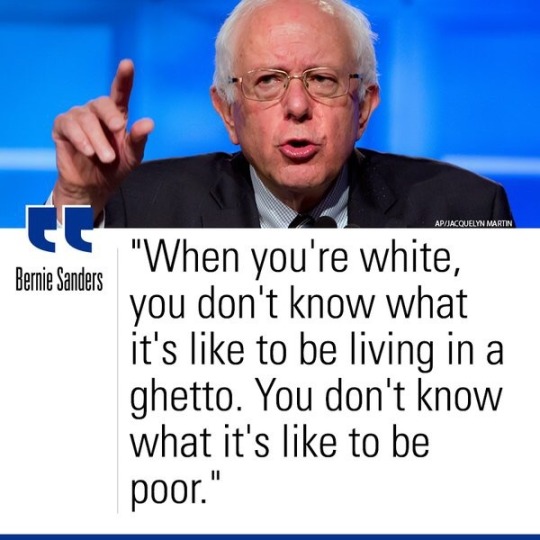
Wise words from a man that owns three houses, and can preach how badly we need our income to be more evenly distributed. I don’t care if someone has a problem with me buying my third jetski while they’re still living in a studio apartment, I rightfully earn the money that I spend, and have the right to spend my money on what I want without worrying that someone feels entitled to the “extra” funds that I have. Yes, Black Lives Matter, I’m talking to you.
Tolerance.org attempts to illuminate “white privilege” by explaining the invisible privileges that I experience as a white person:
“White people receive all kinds of perks as a function of their skin privilege.
Consider the following:
When I cut my finger and go to my school or office’s first aid kit, the flesh-colored band-aid generally matches my skin tone. When I stay in a hotel, the complimentary shampoo generally works with the texture of my hair. When I run to the store to buy pantyhose at the last minute, the ‘nude’ color generally appears nude on my legs. When I buy hair care products in a grocery store or drug store, my shampoos and conditioners are in the aisle and section labeled ‘hair care’ and not in a separate section for ‘ethnic products.’ I can purchase travel size bottles of my hair care products at most grocery or drug stores.”
These are very specific and trivial “privileges.” Band-aids are generally a neutral skin color, and they have always been that way. Nobody cares about if their band-aid matches their skin color, hence why stores sell Spongebob ones, Barbie ones, and princess ones. If you consider yourself underprivileged because you can’t find a skin-matching band-aid, then you need to learn what being underprivleged is. The pantyhose that I end up getting are generally darker than my skin tone but to each their own. The fact that hair care and ethnic products are kept separate is because they are designed for different types of hair. I don’t want to accidentally buy a bottle of shampoo designed for naturally curly hair when mine doesn’t require that. I did some research into hotel shampoos, and they are generically formulated, and they do not specify treatment for a particular hair type.
“Eco-Logical believes simple and natural are the logical choice for today's busy world. As a brand, EcoLogical is looking to provide naturally formulated products that are packaged in earth-friendly materials and have multiple benefits for guests and hotels. Our products have no animal testing, are paraben-free and are crafted with a simple elegant design complimenting a wide range of bathroom environments.”
This is a description of one particular brand of hotel amenity suppliers, for their Eco-logical line of shampoo.
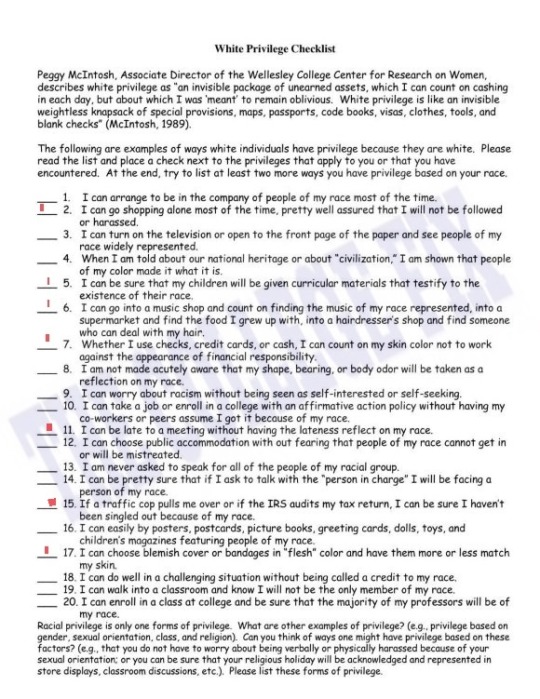
This was an extra credit assignment for some students in college, and quite frankly, it is frustrating.
1. Anyone who has family members or friends of their own race can always manage to be in their company. This question is really asking, do your friends and family of your race spend time with you? That’s not a race question, it’s more of an, are you too busy? Which is a personal question.
2. Anyone can go shopping without being followed or harassed, and on that same note, harassment or being followed could happen to anybody. If you are suspected of stealing, it’s either because you stole, or you’re behaving suspiciously which is the fault of the individual, not their race.
3. The television shows that we watch are different for each individual. If you watch Telemundo, you’ll find Hispanics. If you turn on a Chinese channel you will find Chinese people. If you watch a predominantly white channel, you will probably find white people. The same goes for the paper, if you are subscribed to a newspaper that caters to your racial demographics, then you will find people of your race on it. This question is designed to target “white” newspapers and television shows, but if your requirements for a paper/channel are racially centered, then you should subscribe to ones that require those. Instead of complaining about a lack of representation, find a source of representation, or better yet, create your own.
4. The area that I live in is the United States, which was created by white men and women after getting off of the Mayflower. Not every race contributed to the creation of America, because they were busy creating their own cultures in their respective countries; i.e. the Chinese created China, the Vietnamese created Vietnam, etc... Just because your race didn’t create America at its beginning doesn’t mean that you aren’t valued as an individual. I visited France a few years ago, should I pout about the fact that my people didn’t create it?
5. Schools should not be required to hand out materials that pertain to every single country, they need to learn about what is relevant. Children are going to learn about their race and culture through their parents, learning about their genealogical history, and celebrating their respective holidays. I am going to homeschool my children, but if I wasn’t, I’m not going to remove my child simply because they didn’t learn about 12.5 percent linkage to Vietnam. I trust that my children are going to learn what is sufficient to get them a high school or college degree, they are not required to learn about irrelevant curricular materials.
6. I can go into a music shop and find artists from my country because I know their names. It’s not hard to google artists from a specific country. All races are represented in music, and if you can’t find one from yours, then try Amazon. I don’t understand why people feel so entitled to these things that they call me privileged because I can listen to the Dropkick Murphys in store? Try Spotify. If you go into a supermarket and can’t find the food that you grew up with, well where did you grow up? Also, when? Grocery stores shouldn’t be required to have specialty items from foreign countries, they will stock up on popular items and those that their customers need, not one specific item because one person wanted it. I grew up with peanut butter Lindt truffles, and they are now a discontinued item, should I protest my local grocery store for not selling them? And when it comes to a hair salon, stylists should undergo a holistic curriculum that teaches them to manage all hair types. If they cannot style your hair the way you want it, it’s not a testament to racism, it’s a testament to an insufficient curriculum. Find a store that accommodates to your hairstyle and uses appropriate products instead of lighting their salon chairs on fire for not knowing how to do an upward lace braid with holographic follicles. Just for the record, my straight white male Navy veteran fiance goes to get his hair cut; using military-style regulations, and he has a fairly simple and easy order, but most salons still manage to get it wrong. Does that not fit your white privilege narrative? I didn’t think so.
7. When I spend my money, I am responsible for it. Not my race. If my card is declined, it’s not because I’m a fish out of the water and forgot to read up on Crazy Rich Asians, it’s because I was hypothetically financially irresponsible. If people think that the way you spend money has an effect on your race, that is racist in and of itself. “White privilege” is me being broke on my own, and not at the fault of the typical white person.
8. Your shape, bearing, or body odor are not attributed to your race. They are unique to each individual. If you have a bigger shape, it’s because you overeat, or have other medically-related weight problems. There’s no such thing as being born big-boned, so try again. Bearing is a trait that is subjective to each individual. Some people are raised to have a stern expression, the military teaches you bearing (in addition to a lot of other traits), and it’s something you possess (or don’t) over a period of time. It has nothing to do with race. And body odor, if you have body odor radiating from you like animated green stink flames floating above a trash can, then that is a hygiene problem. Use deodorant like every other person. If I smell the odor and I point it out, that’s not racist, it’s a warning for you to take care of yourself and to be mindful of your surroundings.
9. If I worry about racism or talk about racism, I am referred to as crazy. I am a part of the “model minority,” so I have to worry about the Black Lives Matter movement and support them because I have been a part of the yellow peril. That’s not how it works.
10. Other people say that because I’m white that I need to check my privilege and see where it got me, like school. I didn’t get accepted into college because I was white or Asian. I did well in high school, I had a job, I had a good recommendation from my favorite teacher, I used my newly acquired writing skills to write a stellar admissions essay. I didn’t do that well on SATs, shocker because I’m Asian, right? I had good credentials and sold myself well to college, which is why I got in. The White Privilege myth has gotten me nowhere, which has proven its mythological qualities to me. If you’re black and dumb and don’t get accepted to college, instead of crying institutional racism, how about enrolling in a supplementary community college class to improve your chances of getting in with extra credits? Princeton University sympathizes with the non-white and nonprivileged folk, giving black applicants a 230 point boost on their SATs, Hispanic students are given 150 extra, and best of all, Asians have 50 points deducted from their score. Where’s the white privilege? Not here. Harvard held its first black only commencement ceremony in 2017, isn’t that segregation? No, because it’s not perpetrated by the white man? That is racist. So congratulations Harvard, the goddess of truth would be disappointed in you too.
11. This question essentially stereotypes the author’s race as being late. If you associate being late with a race, then that is racist. Maybe just show up to work on time? Being on time is a prerogative that each person takes as an individual, it’s not a part of any race.
12. I can go to the store in peace because I know that stores are allowed to let in whoever they want, and kick out whoever they want, as long as it isn’t discriminatory. I go into stores to run my errands and get what I need, not to complain to the manager about their white privilege needing to be checked. If you make yourself out to be a victim, that’s not the white man’s fault.
13. I am not asked to speak for my entire race, but often I have to because no one else will, for fear of harassment like these tests. I shared a video of two black women mocking Vietnamese nail salon stylists, and I was called racist because I neglected to mention racism against black people. What white privilege do you speak of? Black people can harass and berate white people all they want because they consider themselves an oppressed minority, and they feel entitled to their anger, rage, and disappointment. White people can’t even mention race without being called racist, bigoted, ableist, sexist, misogynistic, and other terms. Even though the dictionary definition of racism is, “prejudice, discrimination, or antagonism directed against someone of a different race based on the belief that one's own race is superior.” Isn’t talking down to white people, an application of racism? Isn’t mocking Asian women an example of racism?
14. Companies hire people based on their credentials, experience, and history with relative businesses and associations. If you expect every “person in charge,” to be of your race, that is insane. We shouldn’t have to hire people because of identity politics, that’s discriminatory, unorthodox, and inappropriate. People often lament about the lack of female representation in businesses, I wonder why that is? Maybe it’s because women that apply to these positions don’t meet the qualifications. It’s not sexism if women aren’t selected for a position, nor is it racist if the person-in-charge isn’t of your color. I expect a professional to address my concerns regardless of their race. And how would you know? Do you ask each manager or supervisor what their race is before speaking to them? If you only talk to a manager if they share your genealogical make-up, then you are the racist.
15. Traffic cops pull you over because of traffic issues. If you are black and pulled over, and you resist because it’s a white cop, then you have no business talking to me about being pulled over. Law enforcement officers enforce the law, so if you resist arrest or don’t address the concern, which could be, your tail light is out, then you are racist. If a cop pulled me over, I would listen to his concerns, obey his orders, and be on my way with a ticket, warning, or explain the situation so that he understands. Cops do not discriminate, sure there are a few bad apples out there, but a majority of cops are just trying to do their job. And if the IRS has concerns about my returns, then I’ll address them as an individual. It’s not a testament to my race, or else everybody that’s Chinese, Vietnamese, or Irish would be experiencing the same situation.
16. I don’t buy those items to look like me. I buy them because I want them. I shouldn’t need to buy an item because it resembles what I look like. If a store doesn’t have what I’m looking for, then I look online or elsewhere. A store sells what they have left, so if they sold the last Asian greeting card, or finger puzzle before I got there I’m not going to cry racism. Why? Because businesses do what they need to do to earn money each month.
17. I choose band-aids based on their qualities and characteristics as a band-aid: if it fits the wound I need to cover, if it provides soft padding, if it has anti-bacterial lotion/fluid on the padding, and if the adhesive lasts more than five minutes. The last thing on my mind when purchasing band-aids is if the outer layer matches my skin color, I often buy the novelty kind. I don’t care if a band-aid is purple, black, pink, yellow, or rainbow, I just want one that works. If you shop for band-aids based on your skin color, then you should reevaluate how you purchase band-aids instead of calling me “privileged” because Nexcare has a band-aid that matches my skin tone. There’s always the option of buying transparent or clear-colored band-aids.
18. Everything I do is traced back to my Chinese and Vietnamese roots. My Marine Corps recruiter was talking to another girl that needed help on the ASVAB, and she was like, “We have Jenn, an Asian who’s good at math, she can help you.” Any accomplishment I have is attributed to my genes. People think that my genealogical roots got me a high school diploma when it was the countless hours of studying, time spent with my teachers, paying attention, SAT prep school, and my dedication and drive to learn that earned me the success I experience now. I did well and got into college because I put in the work. There is no white privilege, it’s called going out and earning a living, to ultimately fulfill the American dream.
19. Approximately two percent of students are Asian, so odds are I’m the only Asian. Last semester I was the only Asian student in three of my four classes. Sure, a majority of students are white, but that’s an accurate reflection of the national population distribution. Approximately 72 percent of America is white, so the classrooms should reflect that number. It’s not a racist or white privilege that classrooms have disproportionate numbers of white, black, Hispanic, and Asian students.
20. Again, professors and all other people should be hired based on their education, experience in the field, certifications, licensures, and other projects that are relevant to the field that they want to teach. I don’t care if a professor is Asian, I care if they know what they are going to teach me. I am paying their salary regardless of their race, so that doesn’t matter. What does matter, is if they possess the skills and qualifications to teach me what I need to know in order to pass this class and graduate.
This checklist for white privilege shows me that it’s not privilege that they care about, it’s more about highlighting the victim mentality that most people have, and the mundane things that they have to complain about.
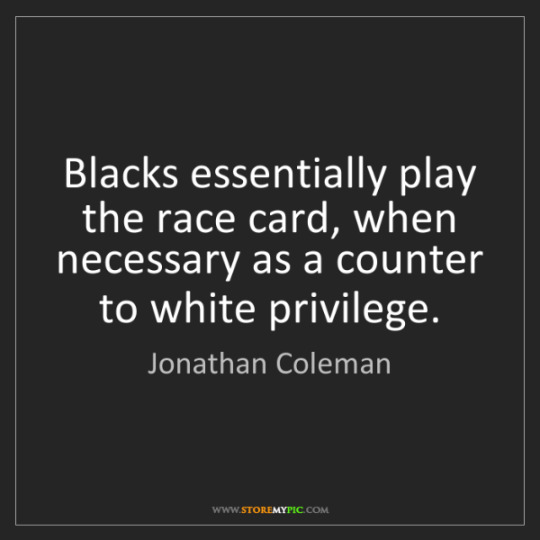
If I said, “I got into college,” that doesn’t mean anything. They would say, “Congratulations on your white/asian privilege, and for booting me out of a chance at being admitted because I’m an oppressed black person.”
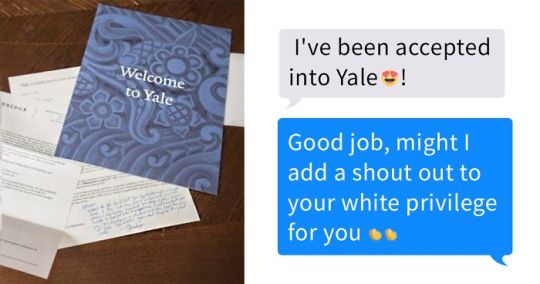
This person worked diligently and arduously to earn a chance at being admitted to Yale, and someone had the nerve to undermine their hard work and success for “white privilege?” Atrocious.
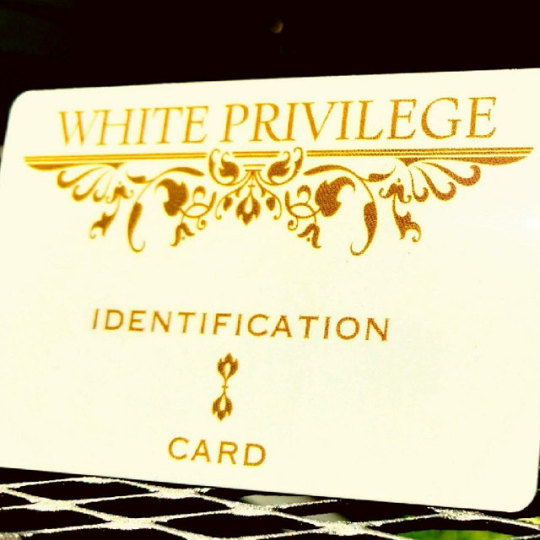
Creative Etsy folks have crafted this card whenever a white person feels the need to oppress people with their invisible knapsack of privileges. Absolutely absurd, and available on Etsy.

These are all things that other should not have to apply for. If you were born in the United States, odds are you learn English as your first language. Having a criminal record is indicative that you don’t know how to follow laws, that doesn’t make you any less privileged as a person. All of these other spaces are frivolous and don’t contribute to white privilege at all.

“My privilege is showing? More like, “Your victim mentality and entitled attitude is showing.”
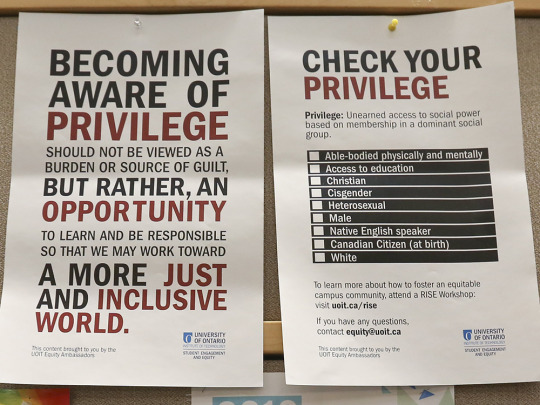
I don’t have any “social power,” because of any of these things. I know this is from Canada, but the principle still stands. I don’t experience any privileges in life because I am able-bodied. I have depression and anxiety, but that doesn’t make me any less-privileged than anyone else. I have access to education...like every person does. The degree varies, but everyone readily has access to an education. The question is, are you willing to go the extra mile to get it? I am not Christian, but I believe that everyone needs to have a sound moral foundation and to be taught to know the differences between right and wrong. No one is privileged for being religious, I would point you to the Holocaust, the religious persecution of 6 million Jewish people. There are no cis-gender privileges. If you have gender-dysphoria and think that you’re underprivileged for it, then that is your own problem. There are no heterosexual privileges, believe me. There are none. If you are gay, or lesbian, no one is stopping you from going out and loving someone except yourself. If you let other people bully you into thinking that it’s unacceptable, that doesn’t make your love any less strong or prominent. If someone disapproves of my relationship that doesn’t make me any more or less privileged.
So please, instead of telling someone that their privilege is showing, ask yourself, “Am I portraying a victim mentality?”
1 note
·
View note